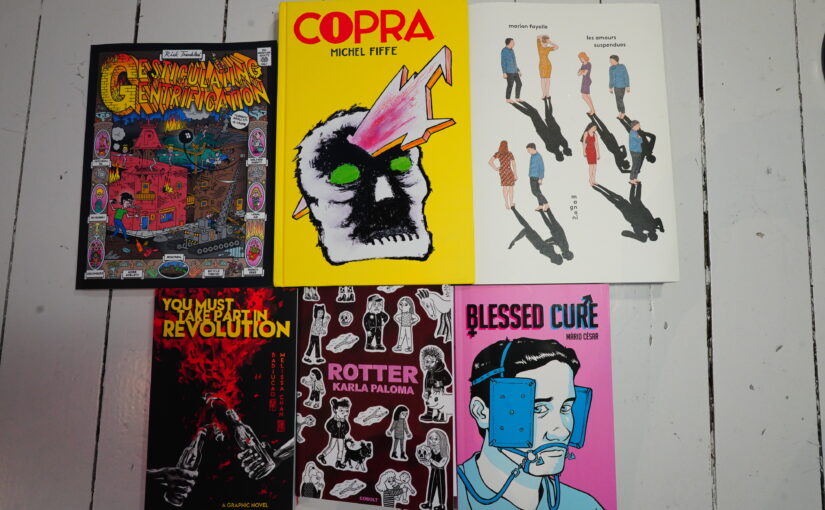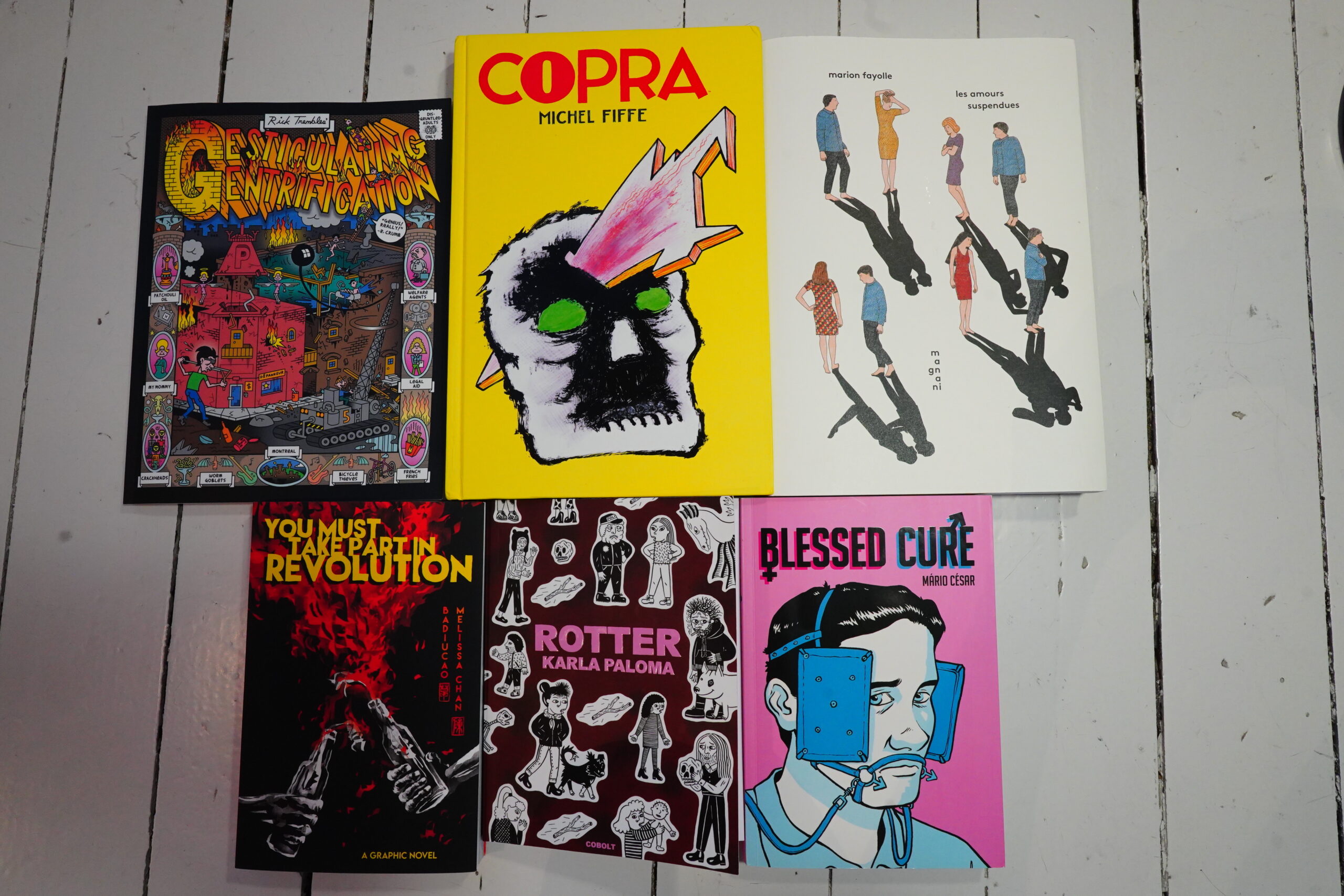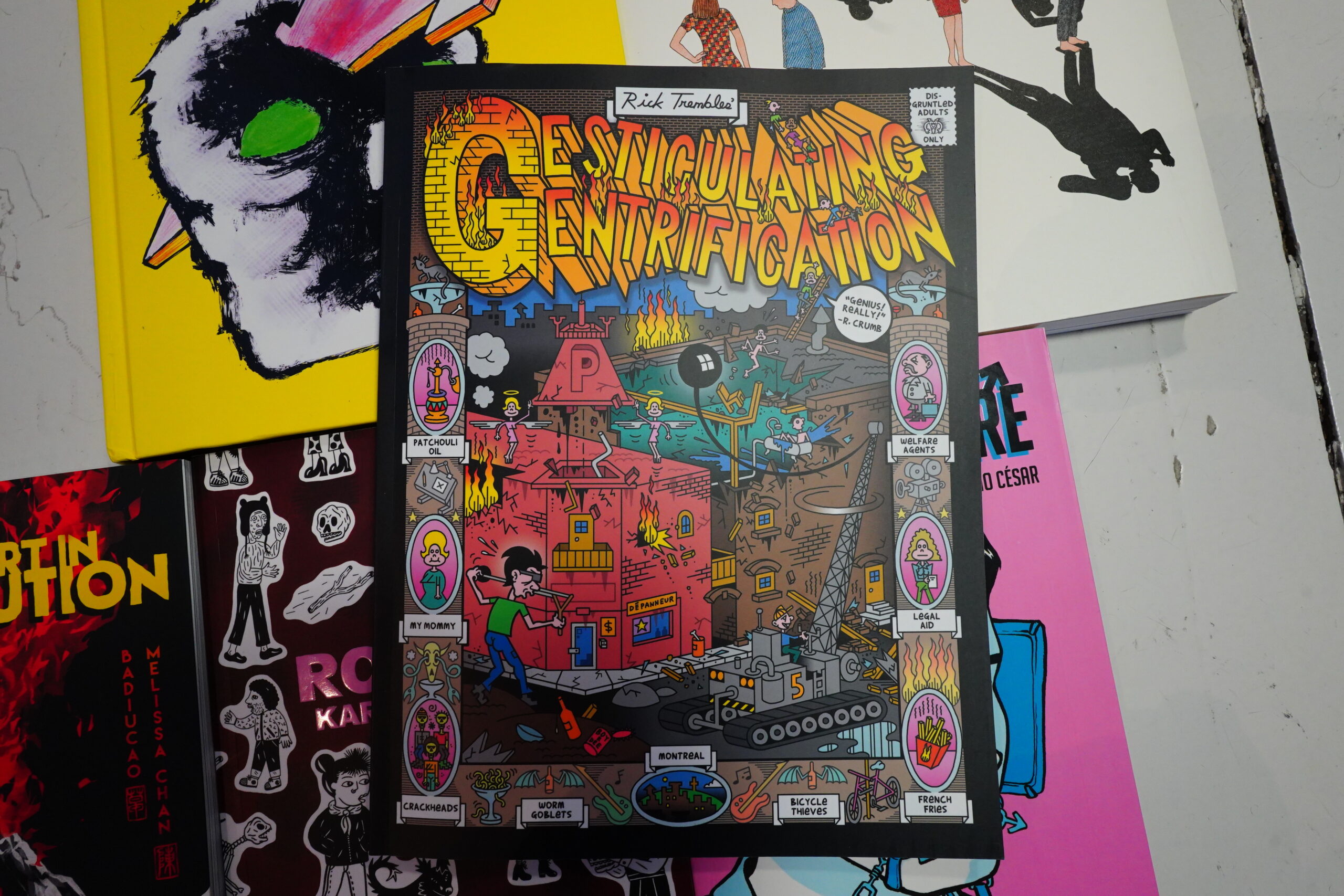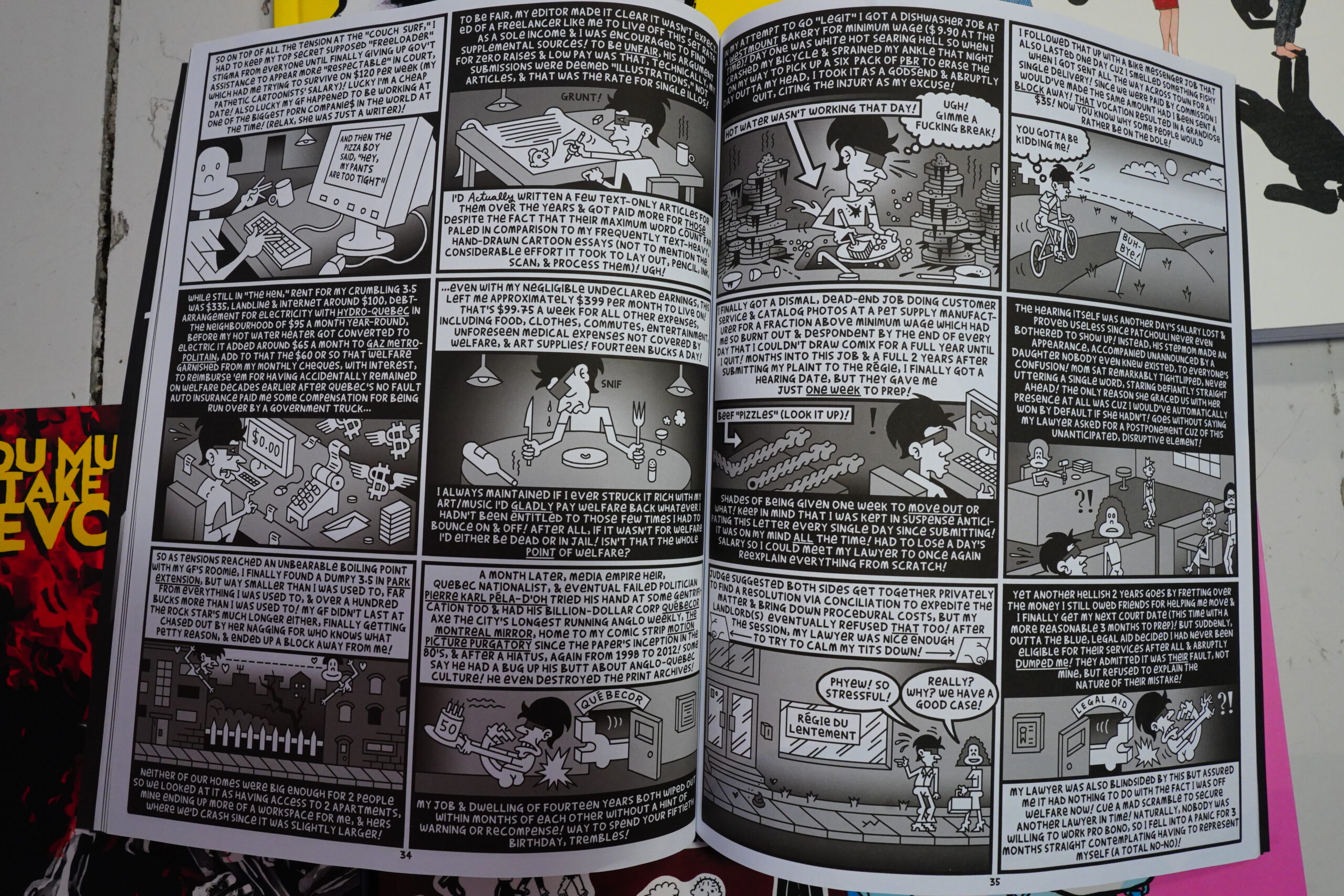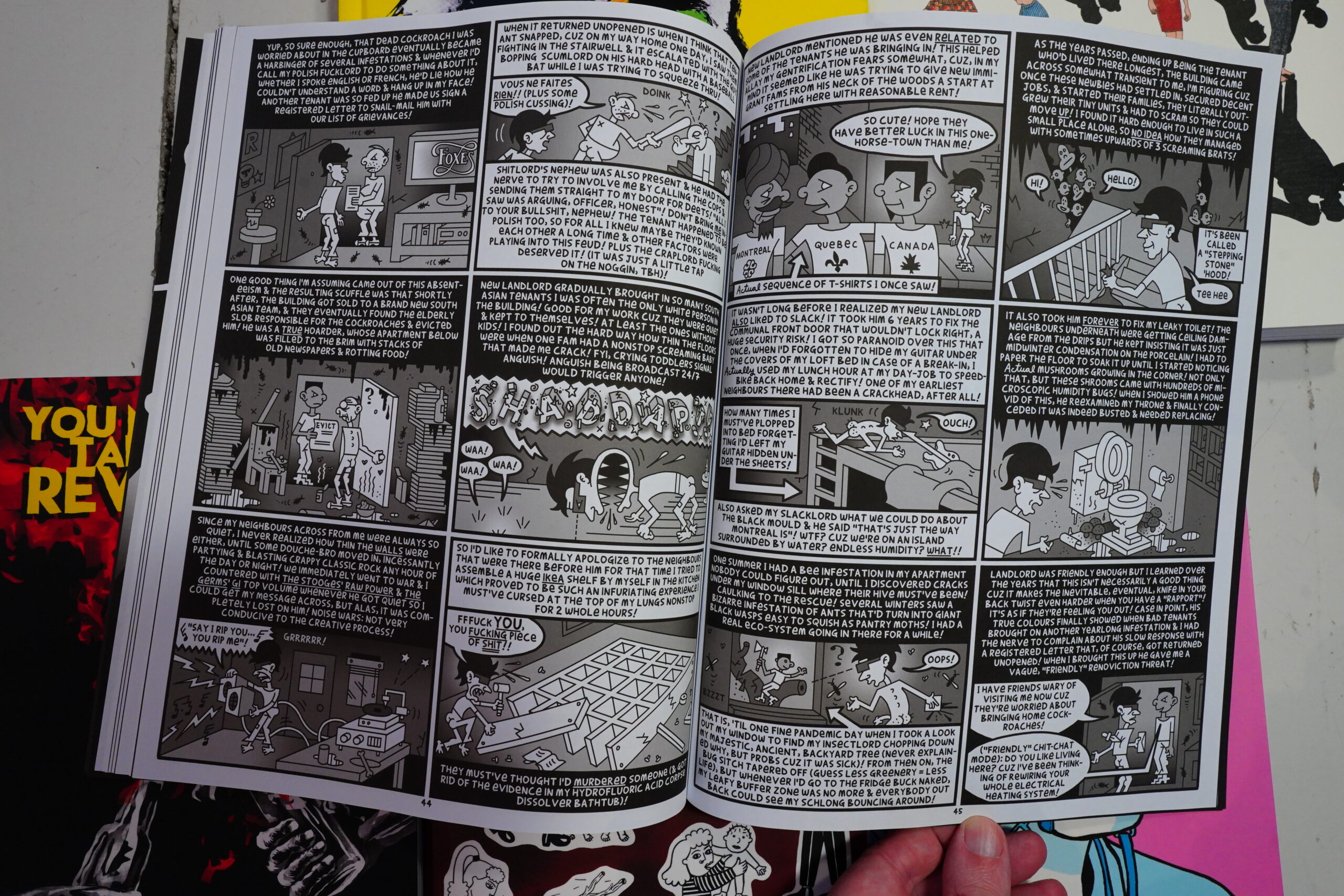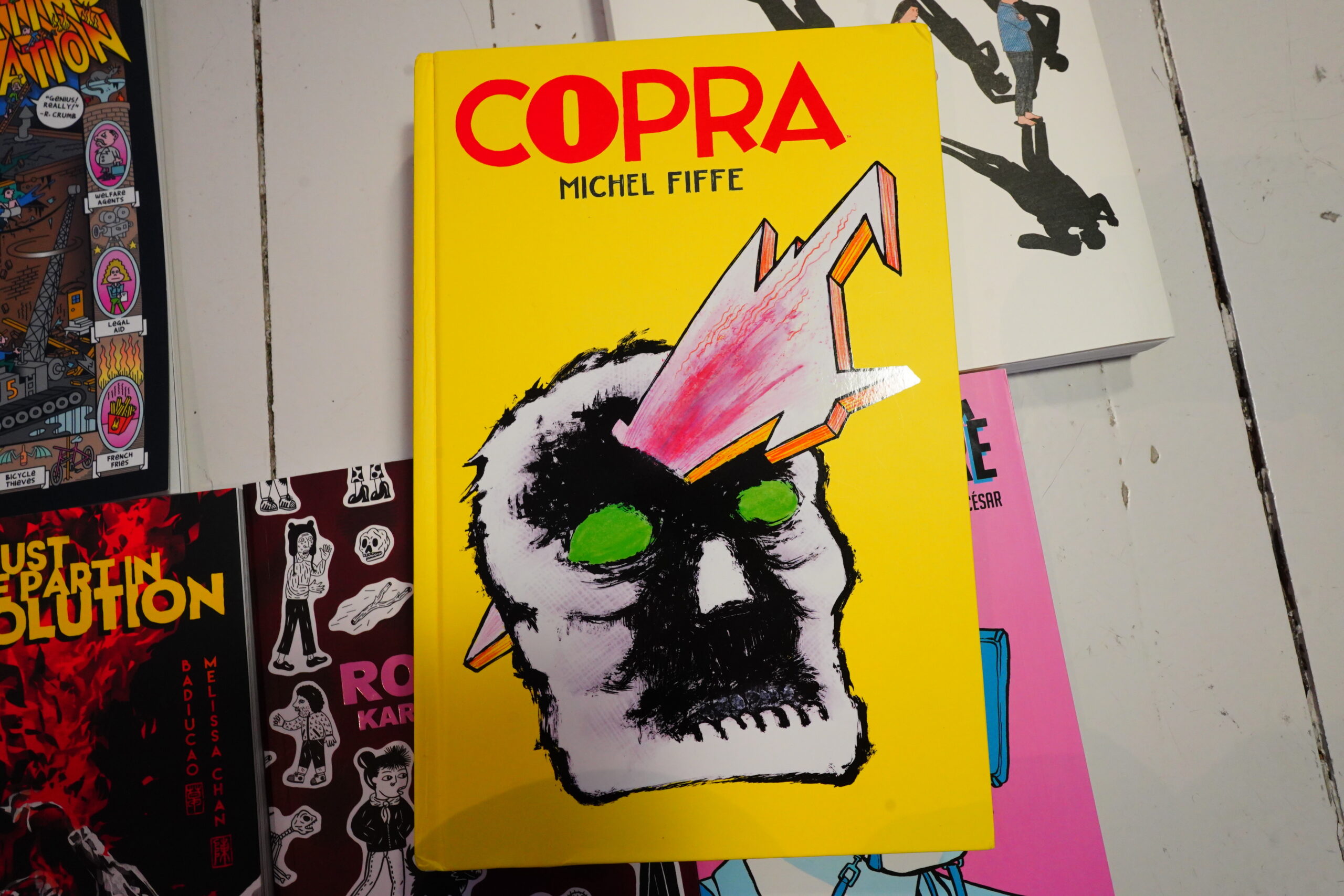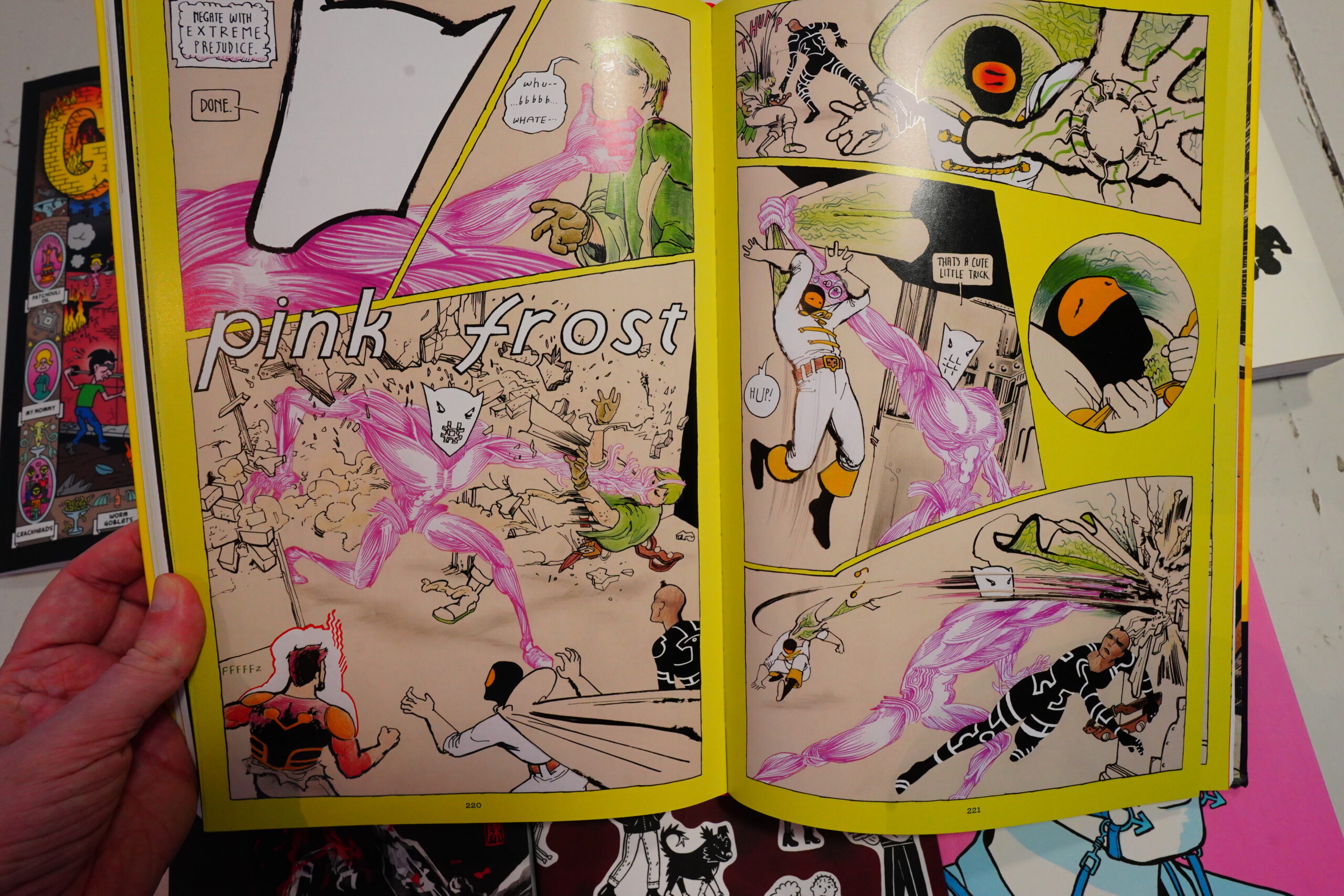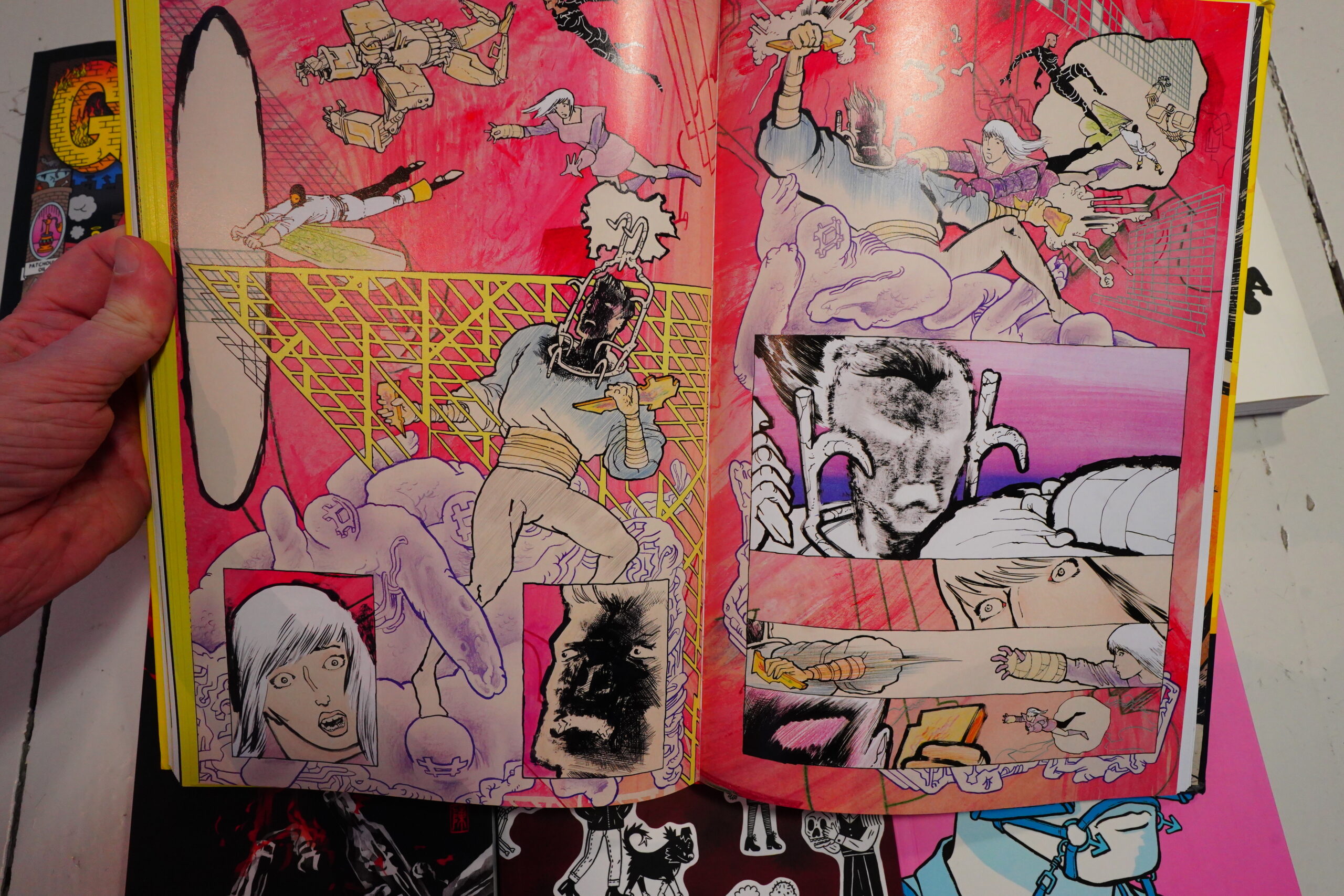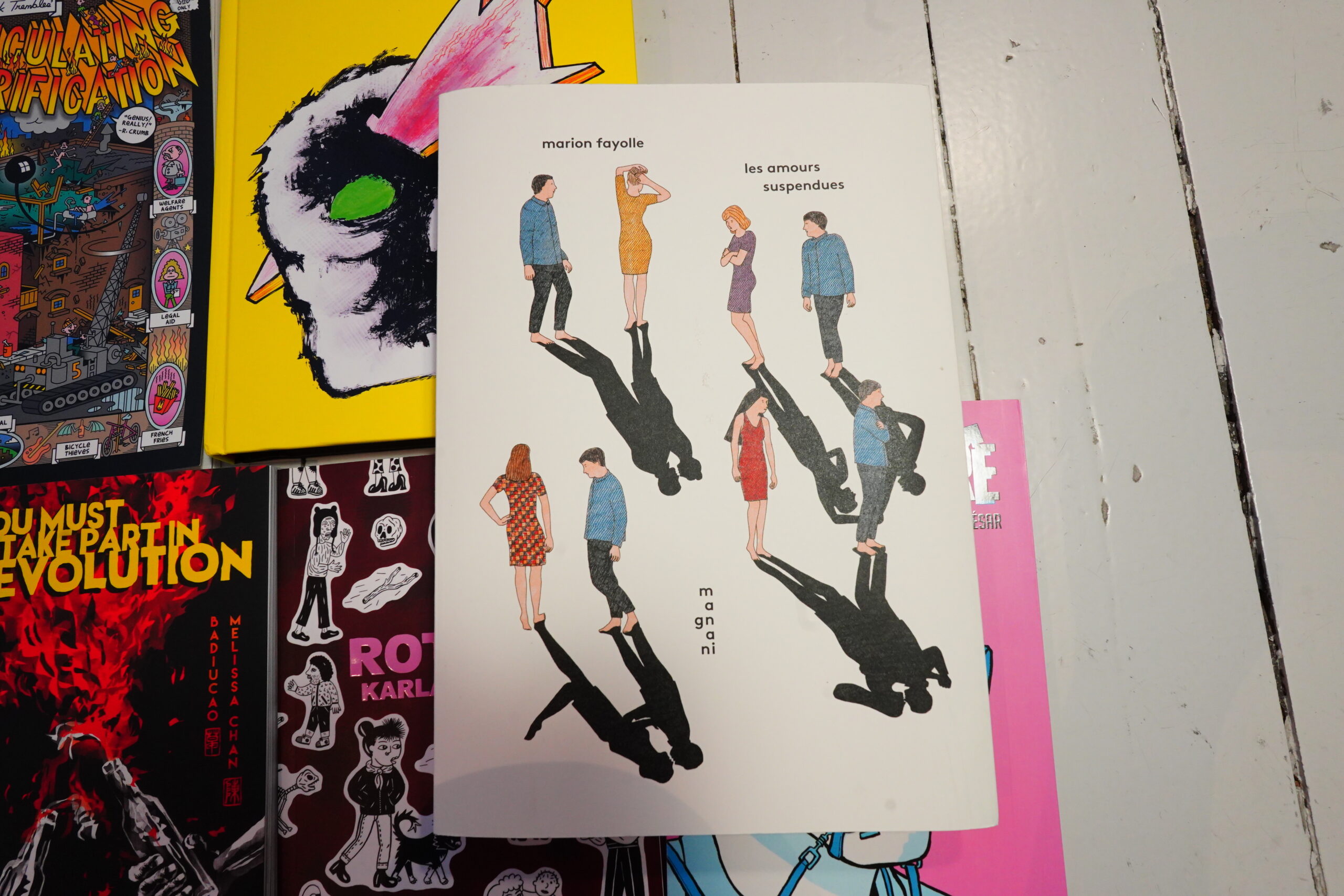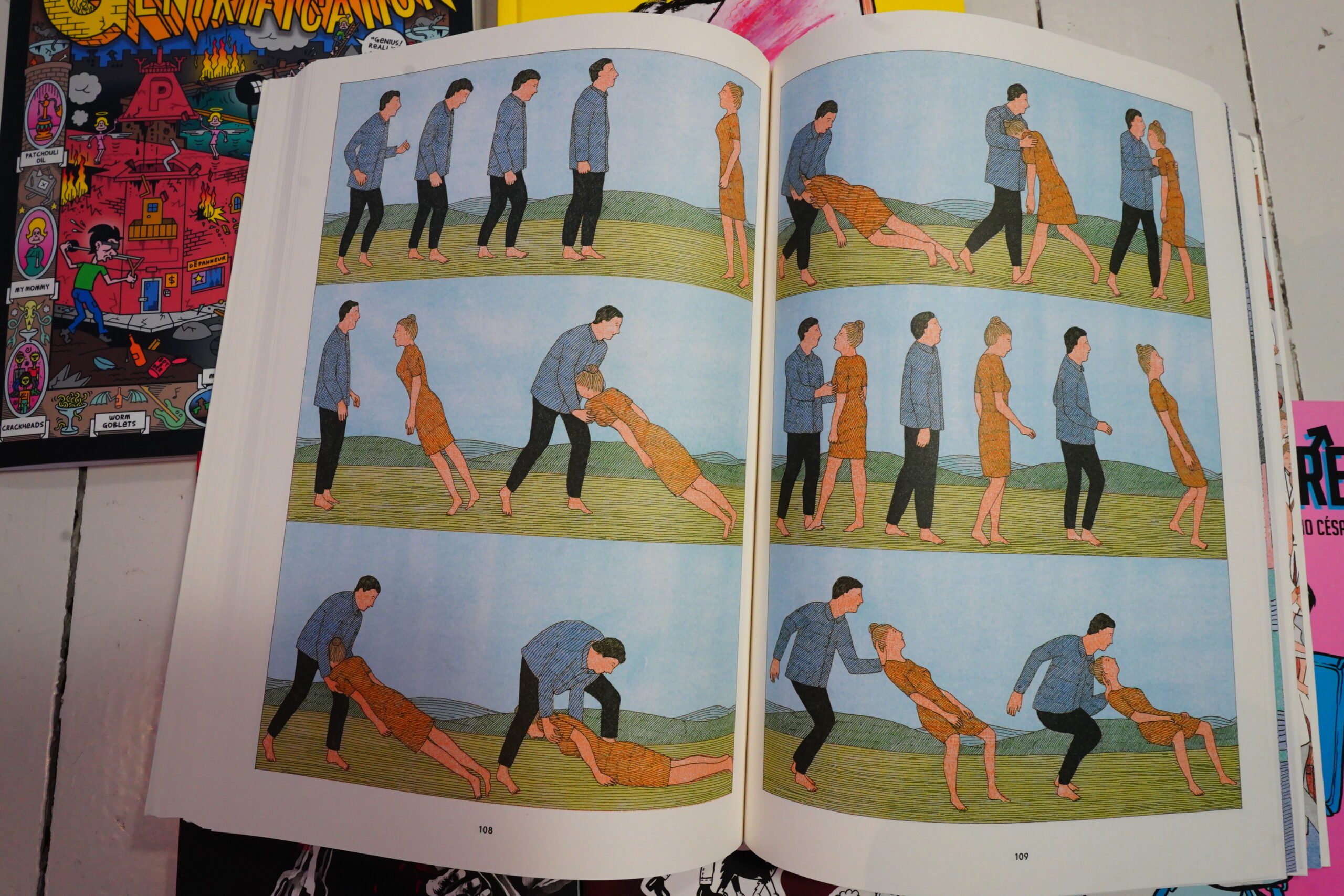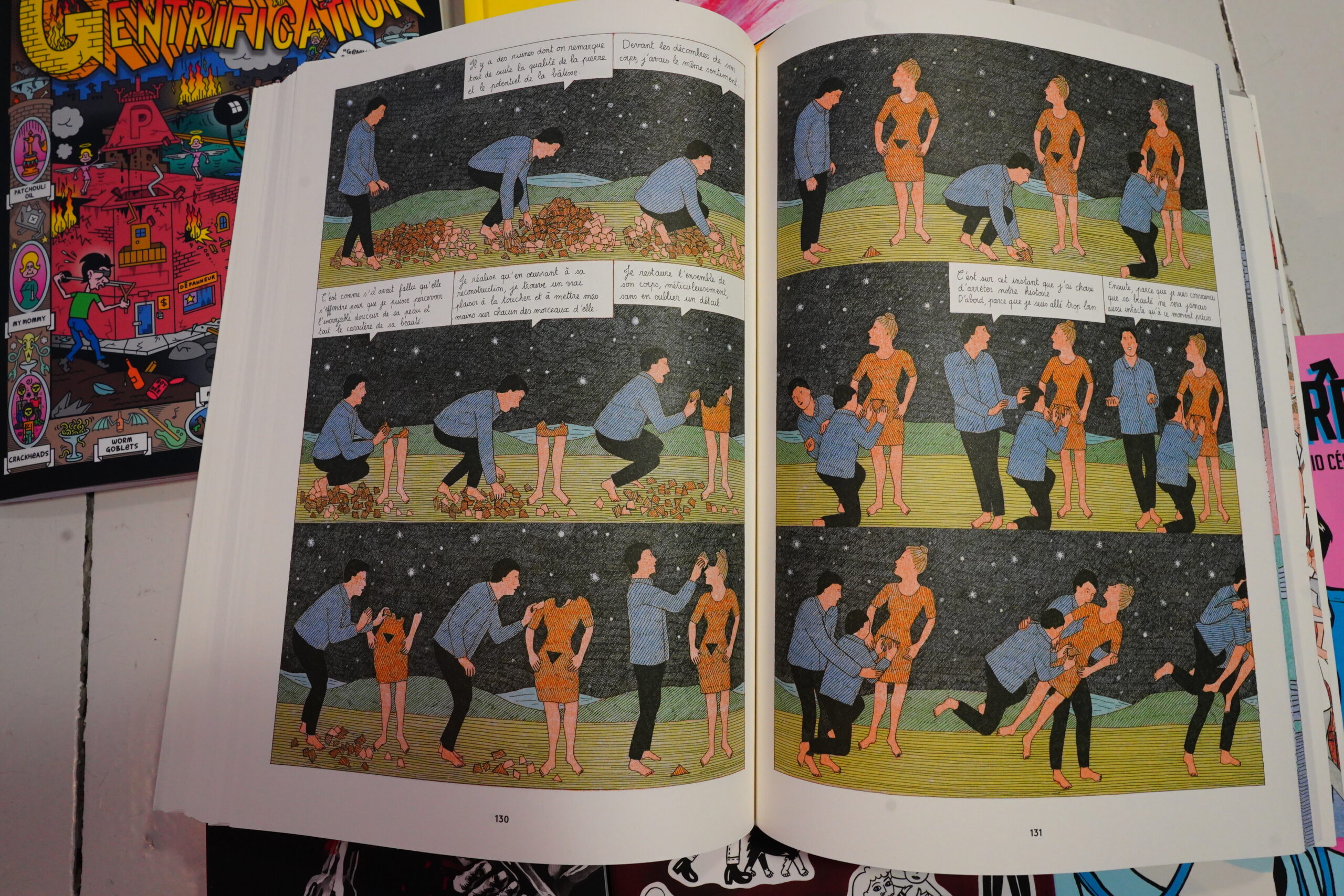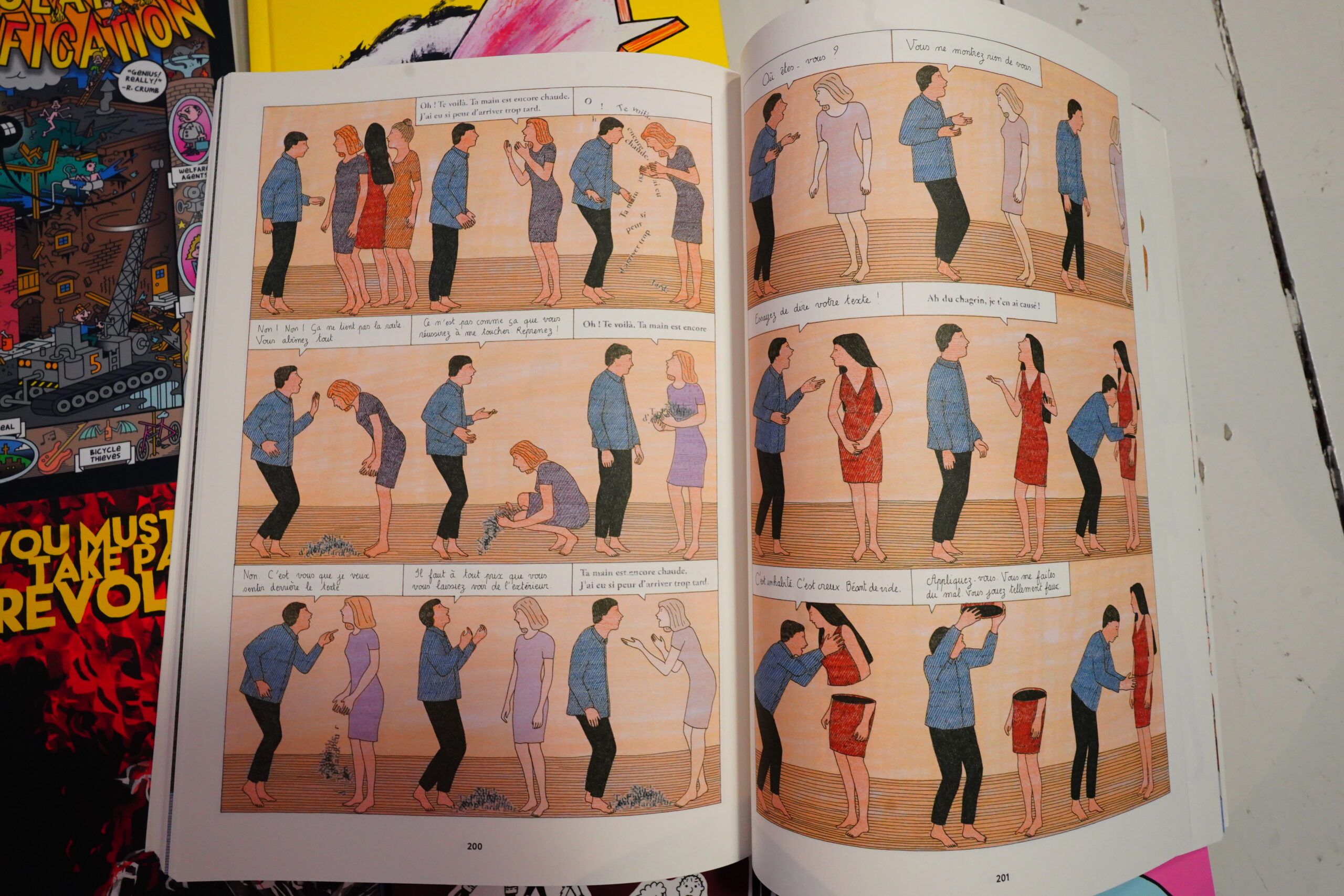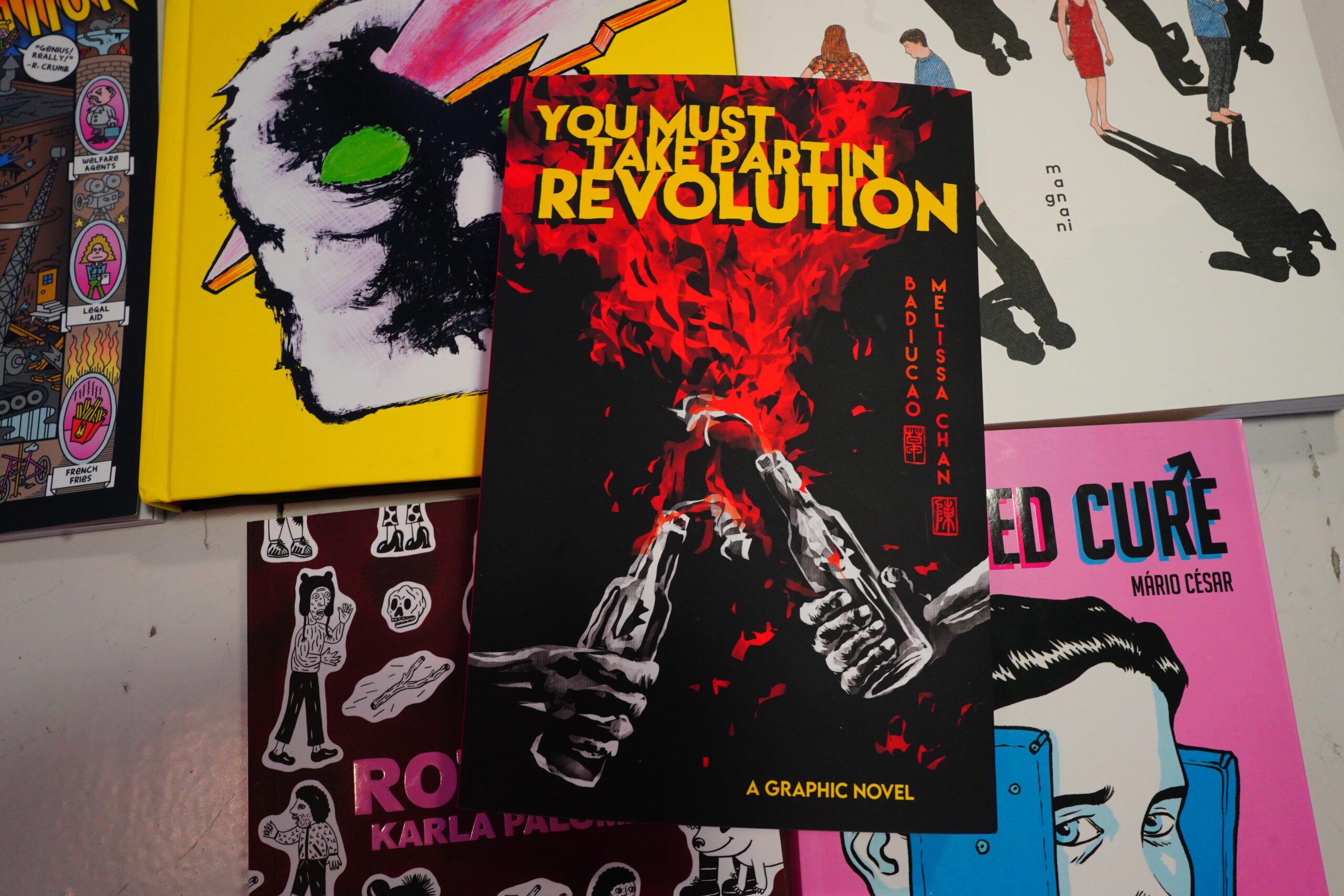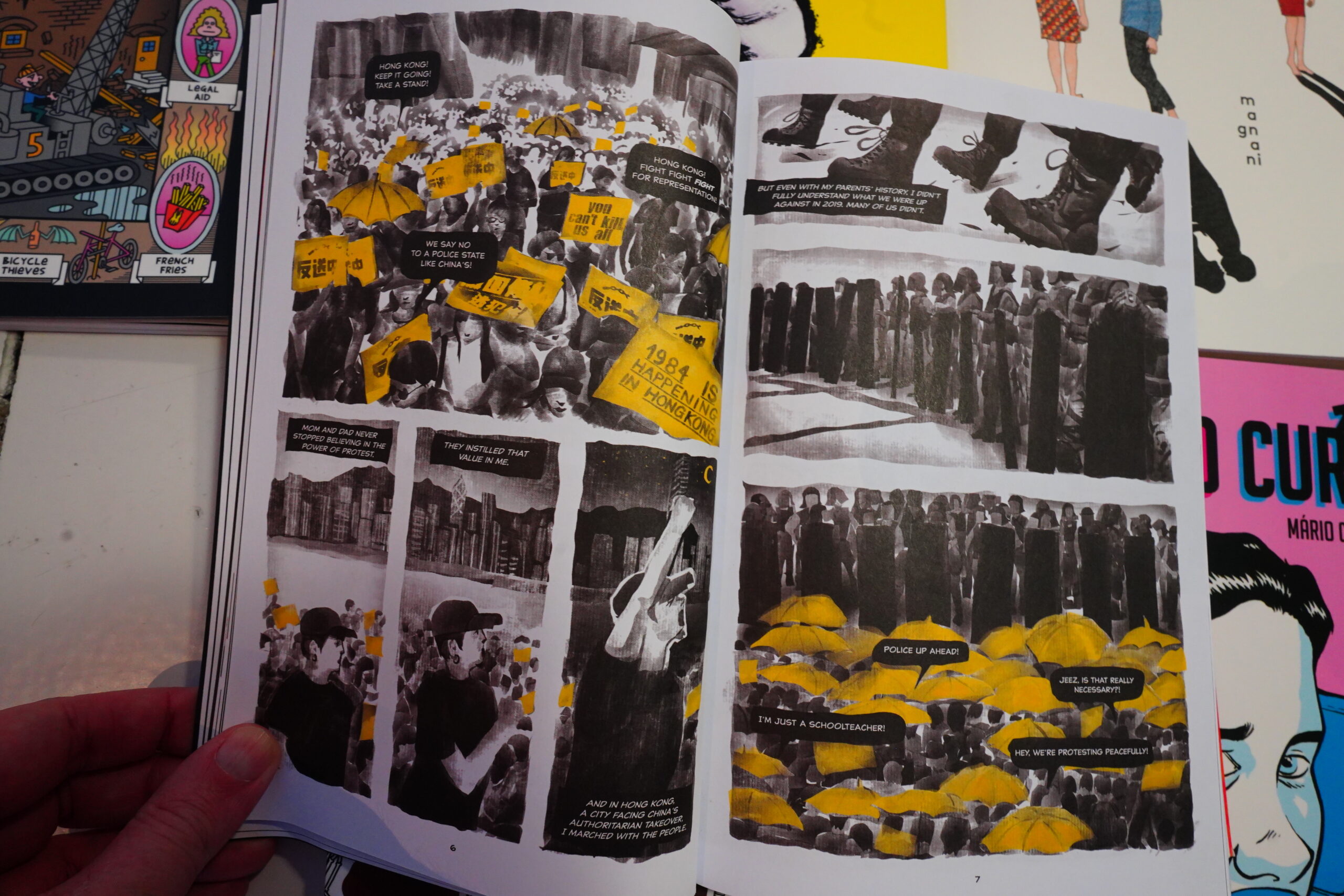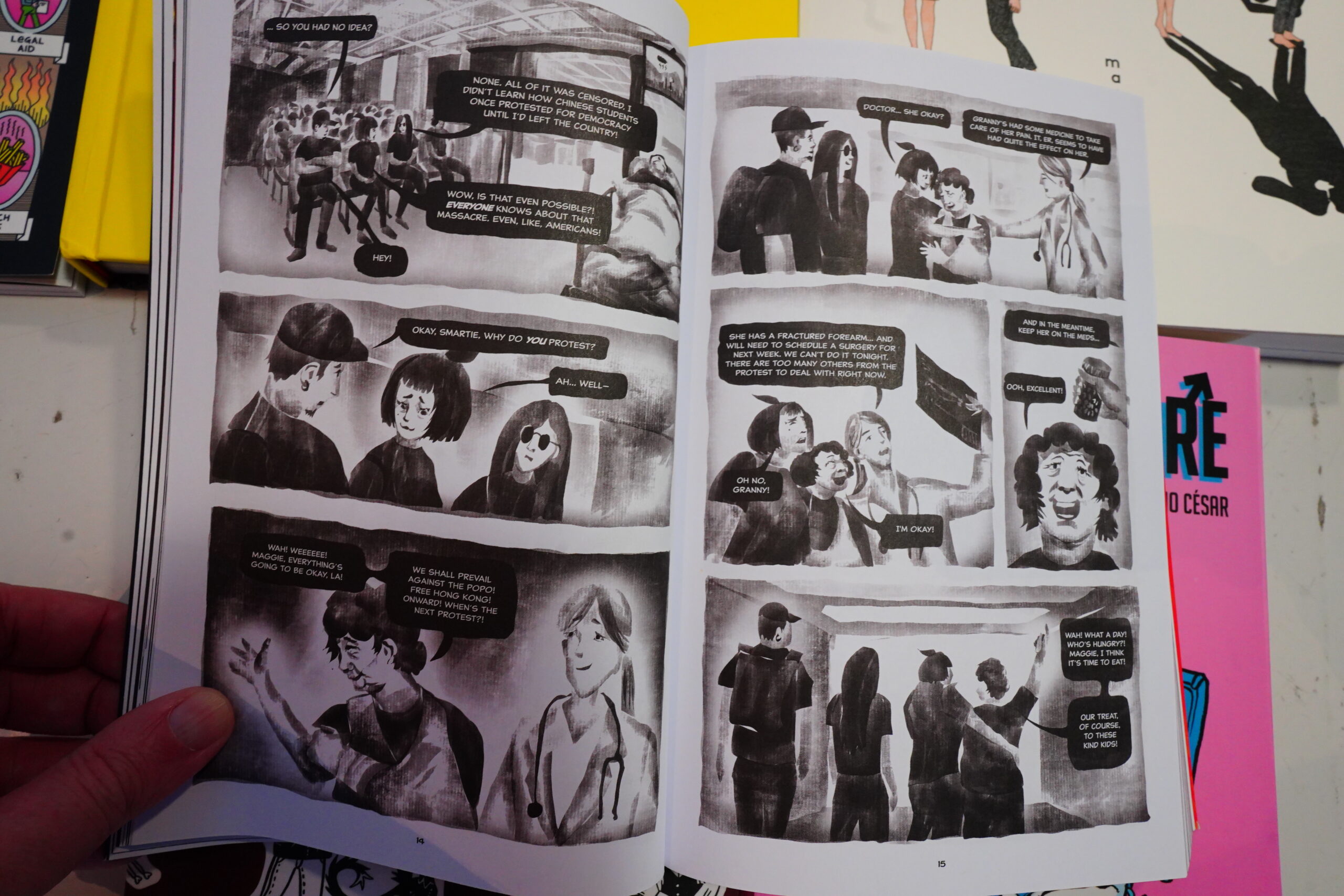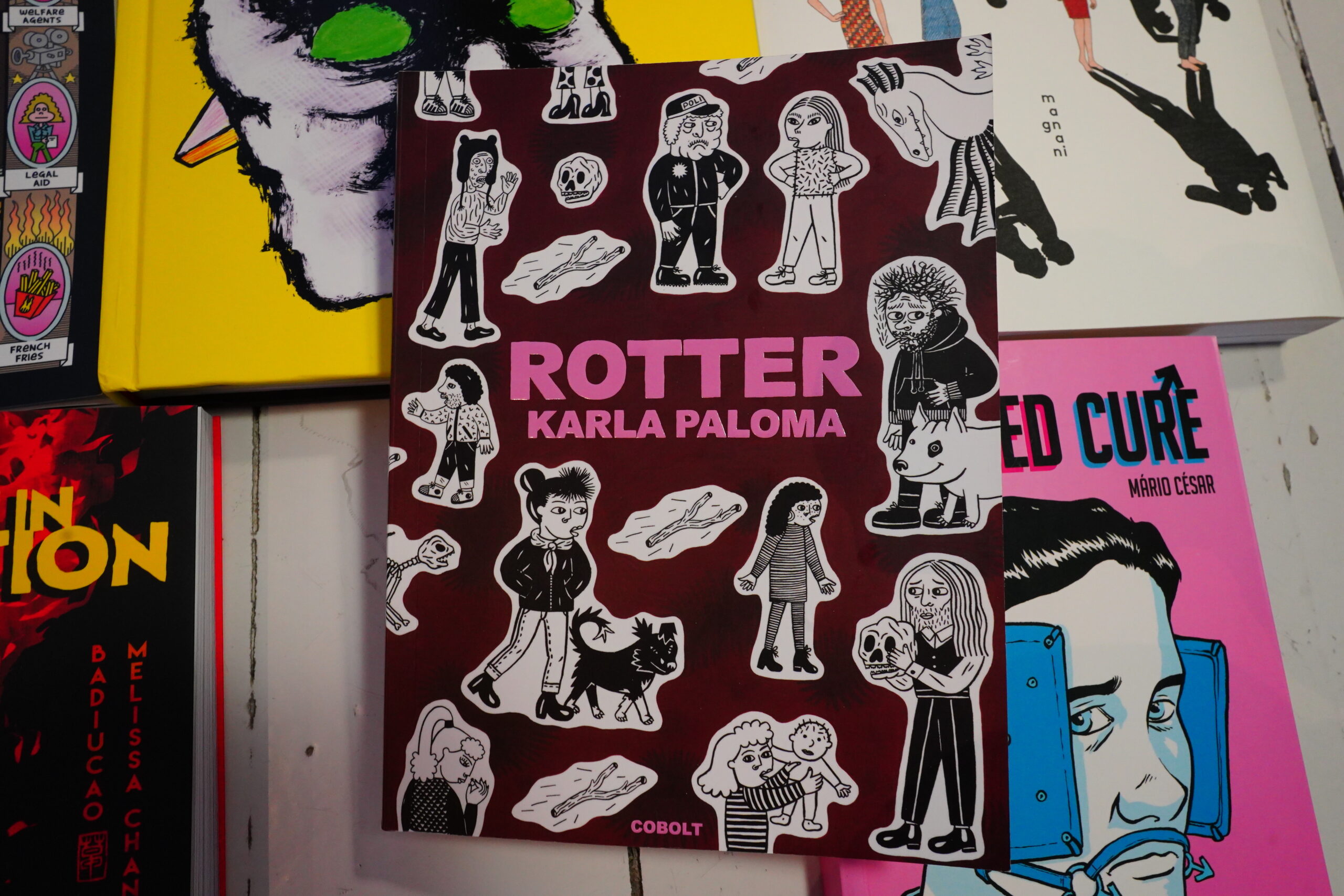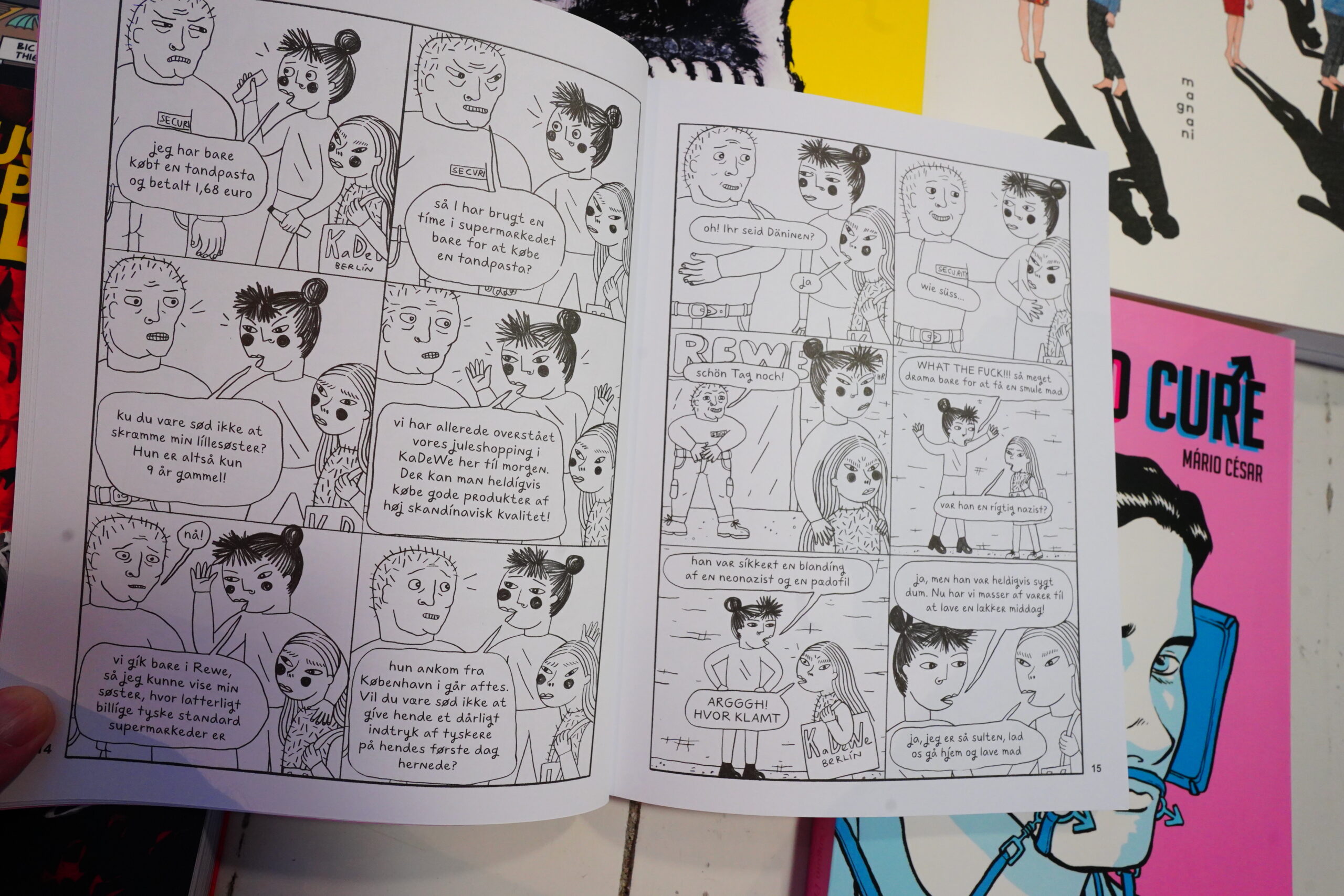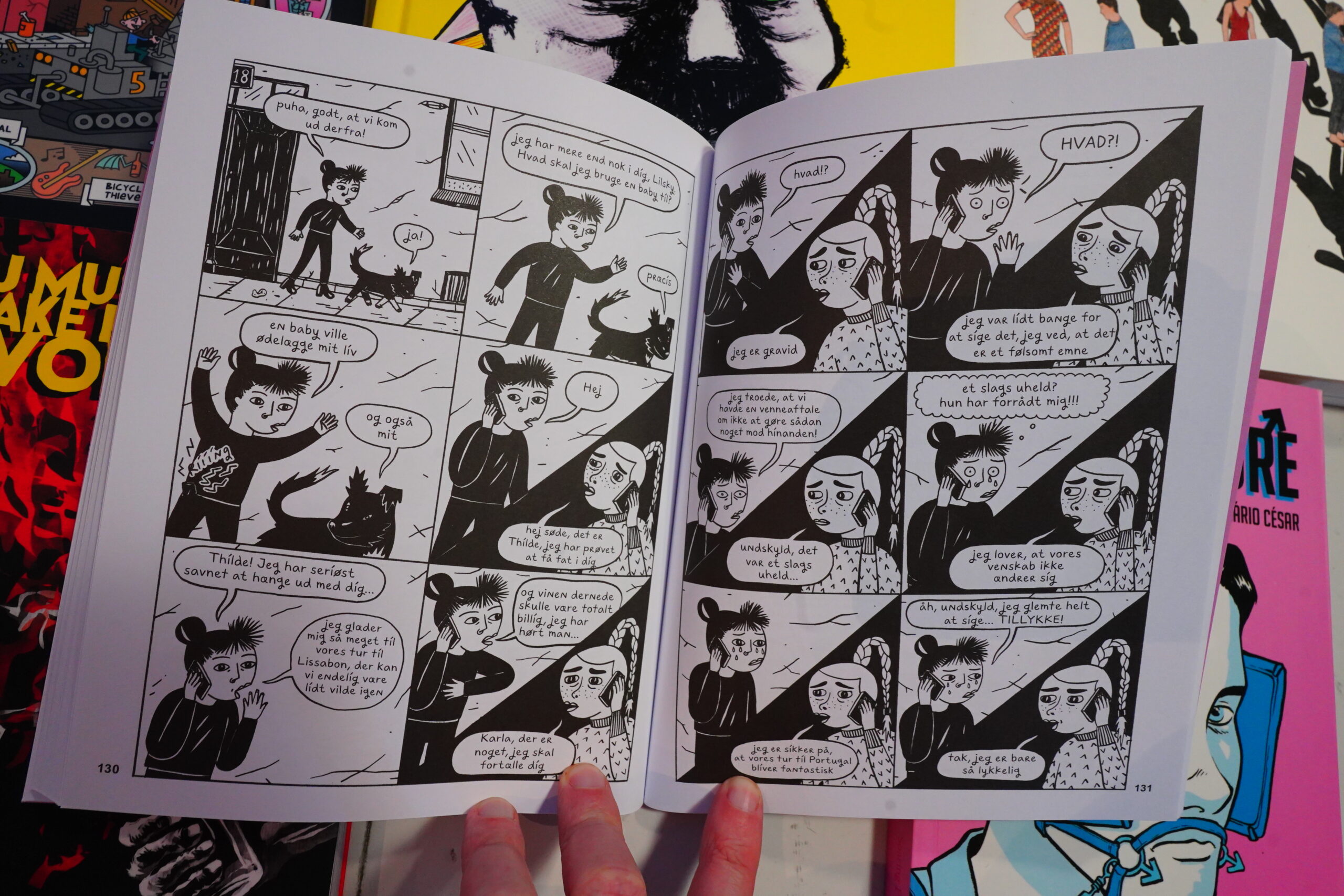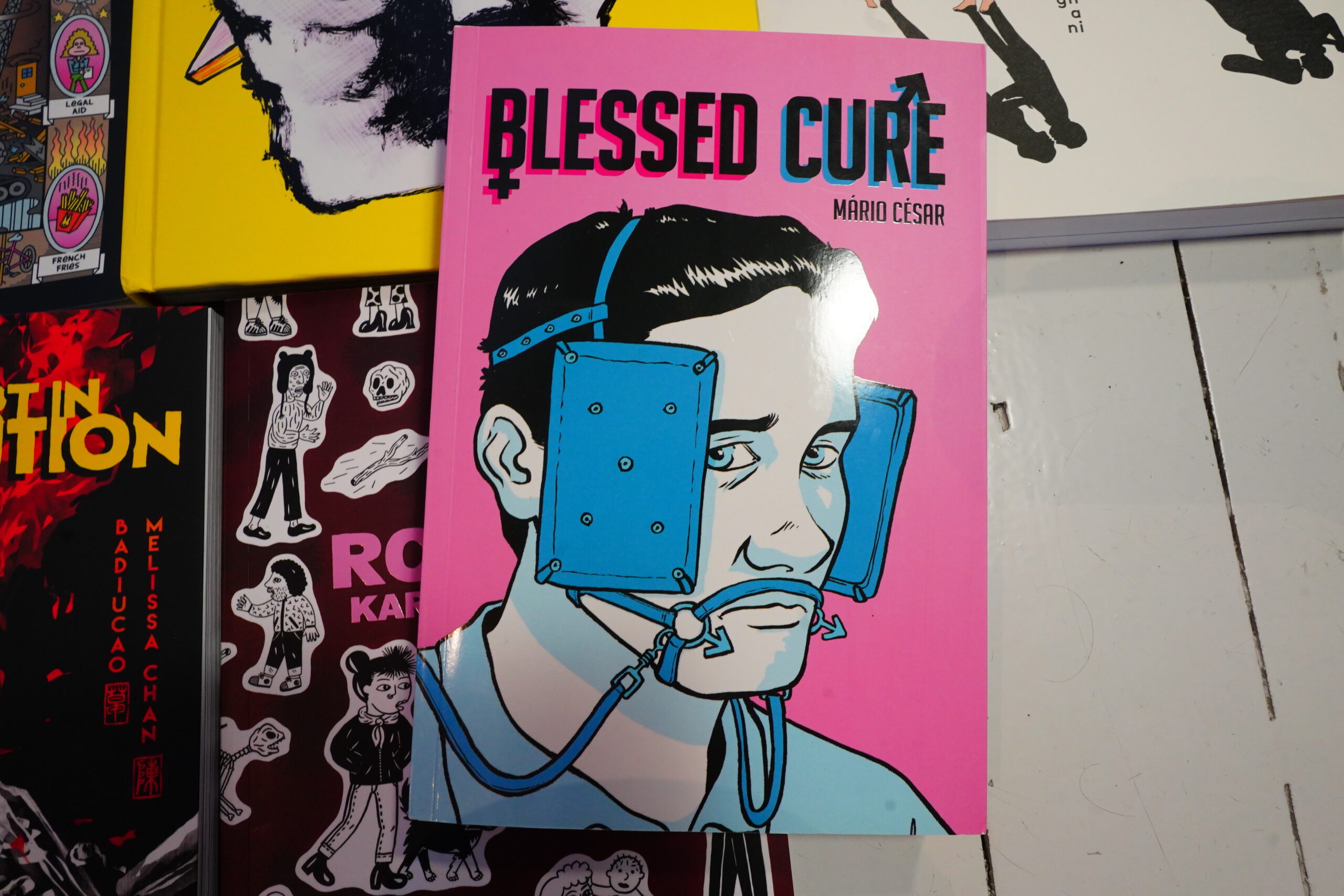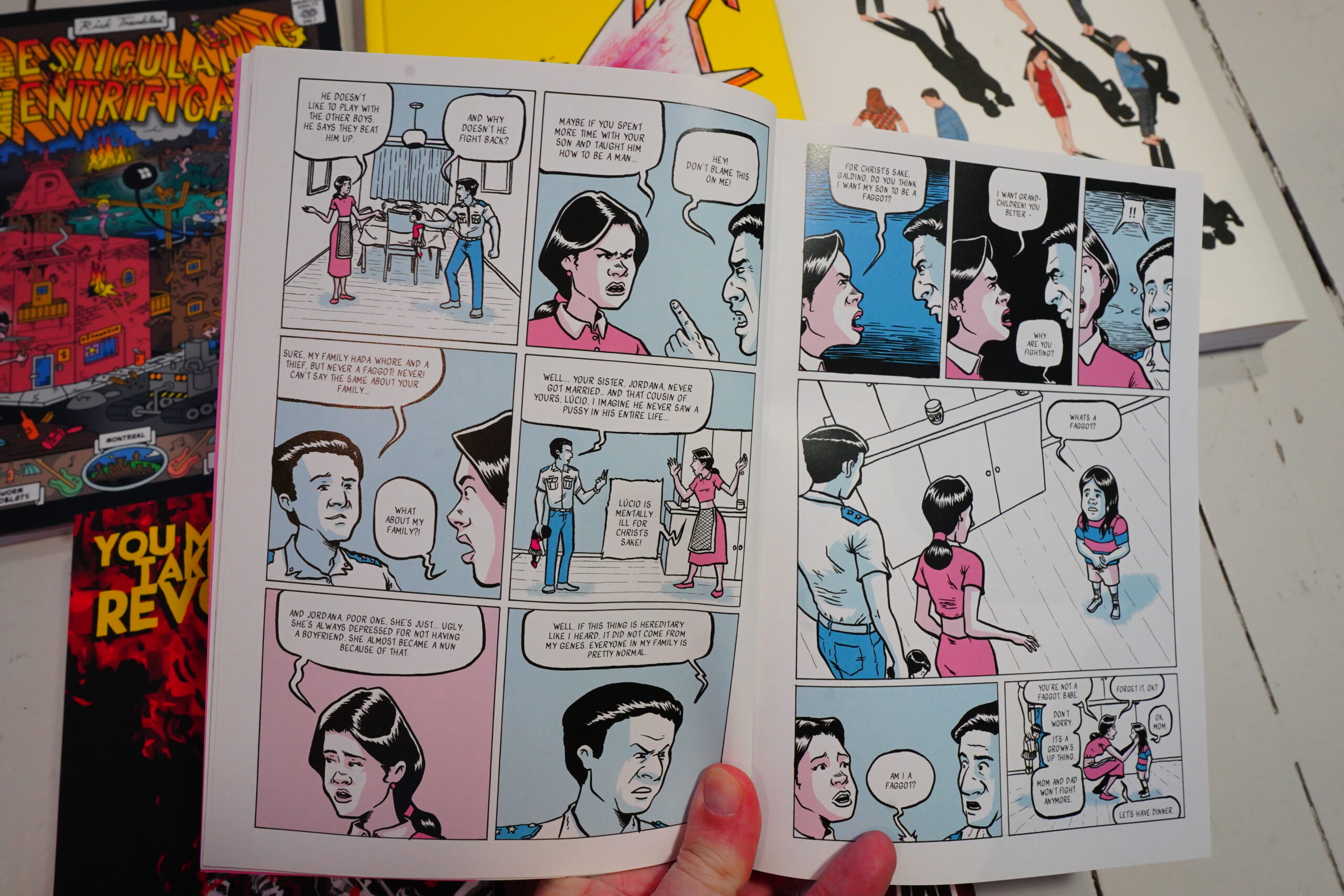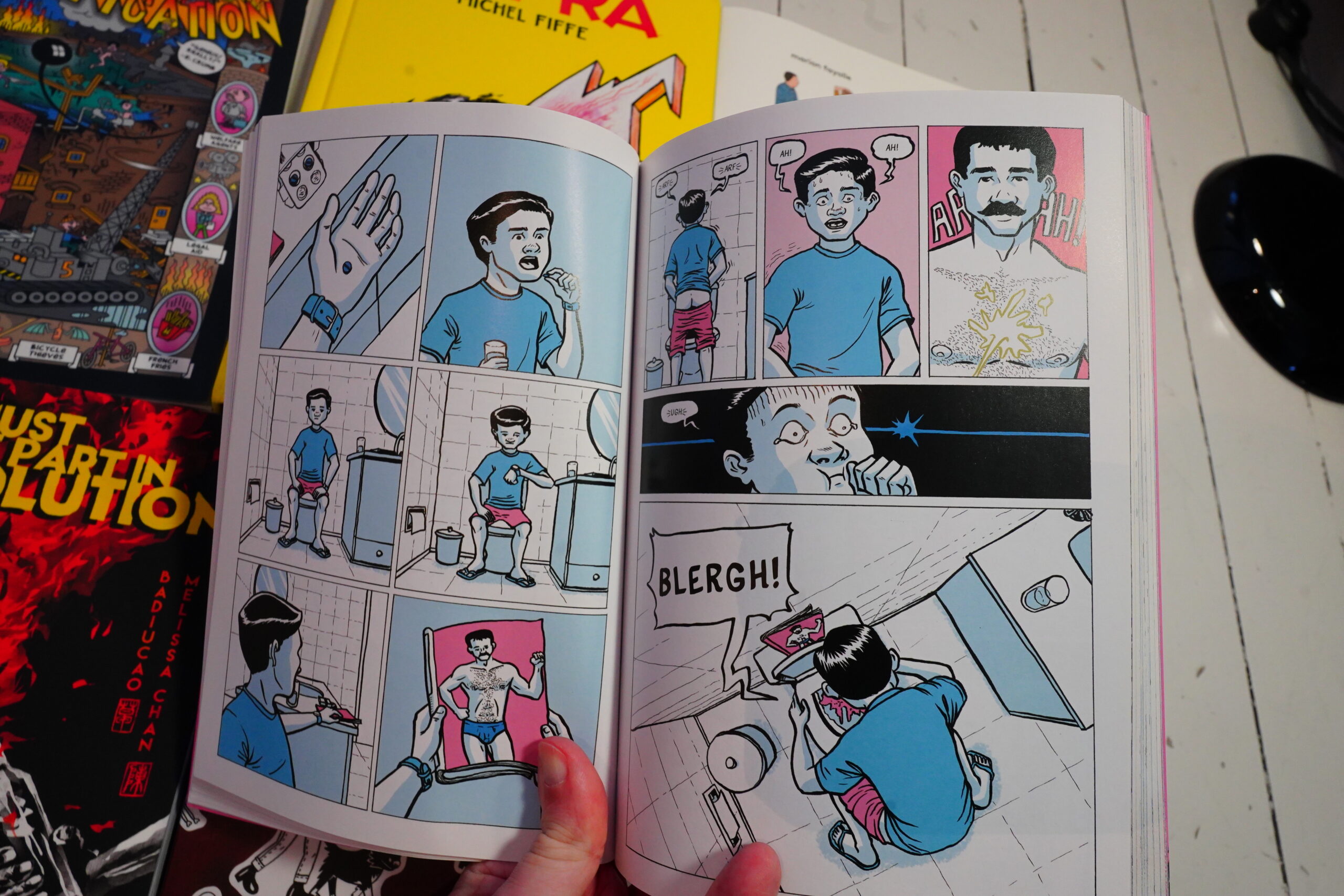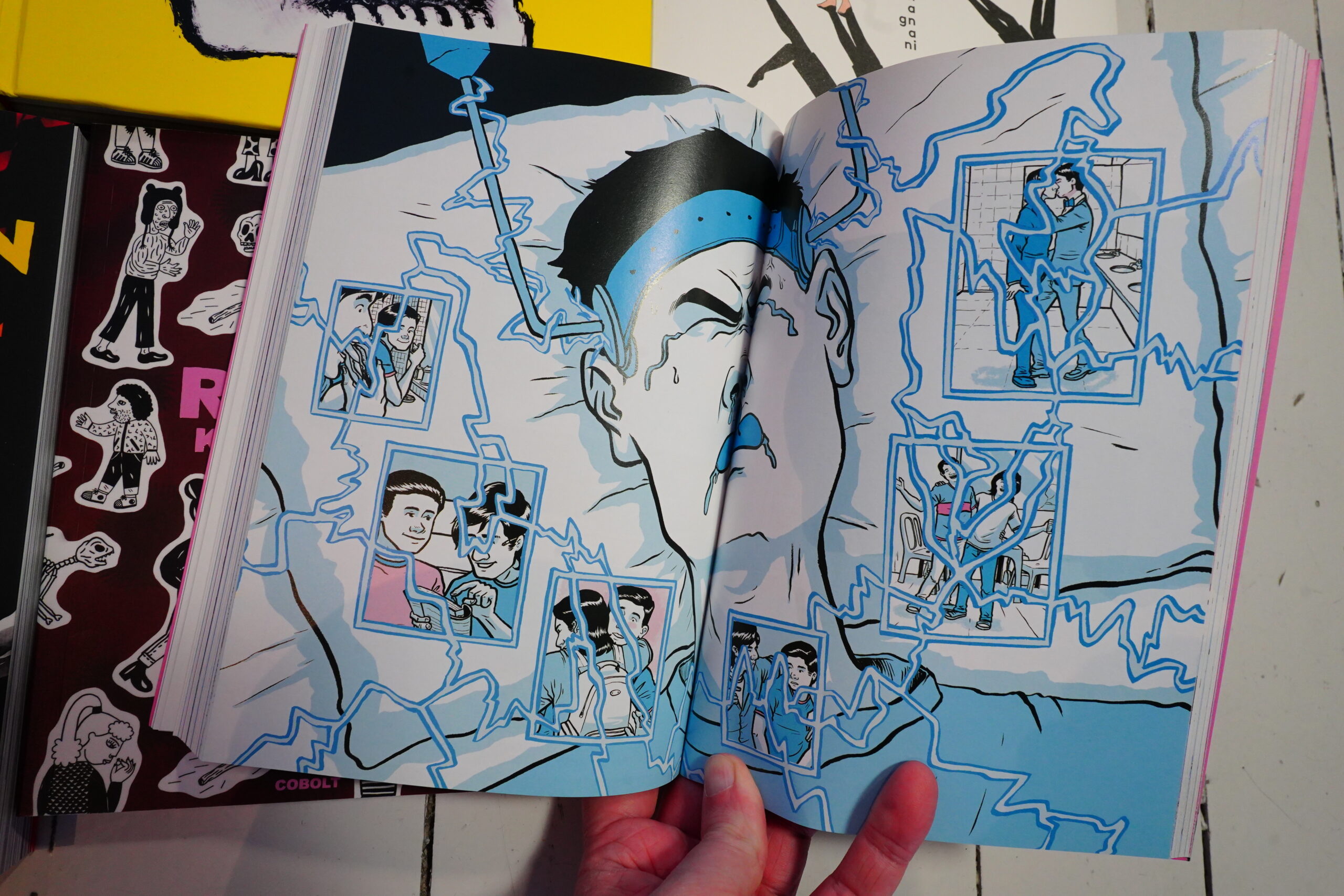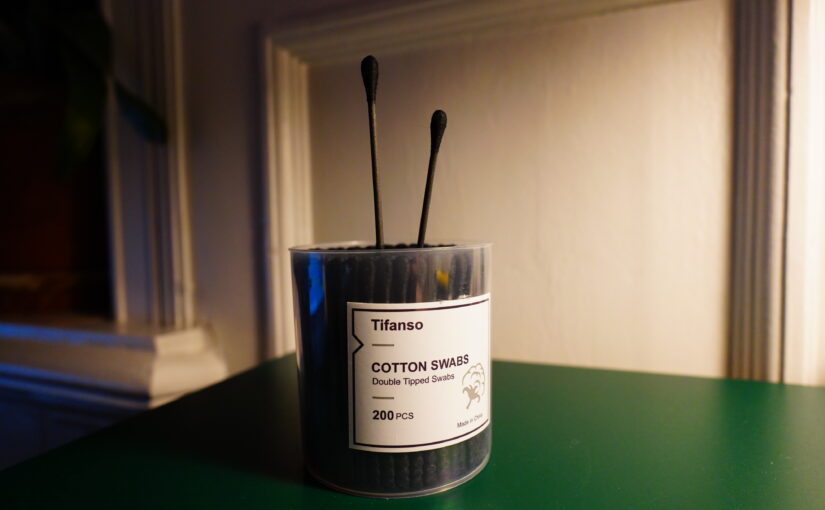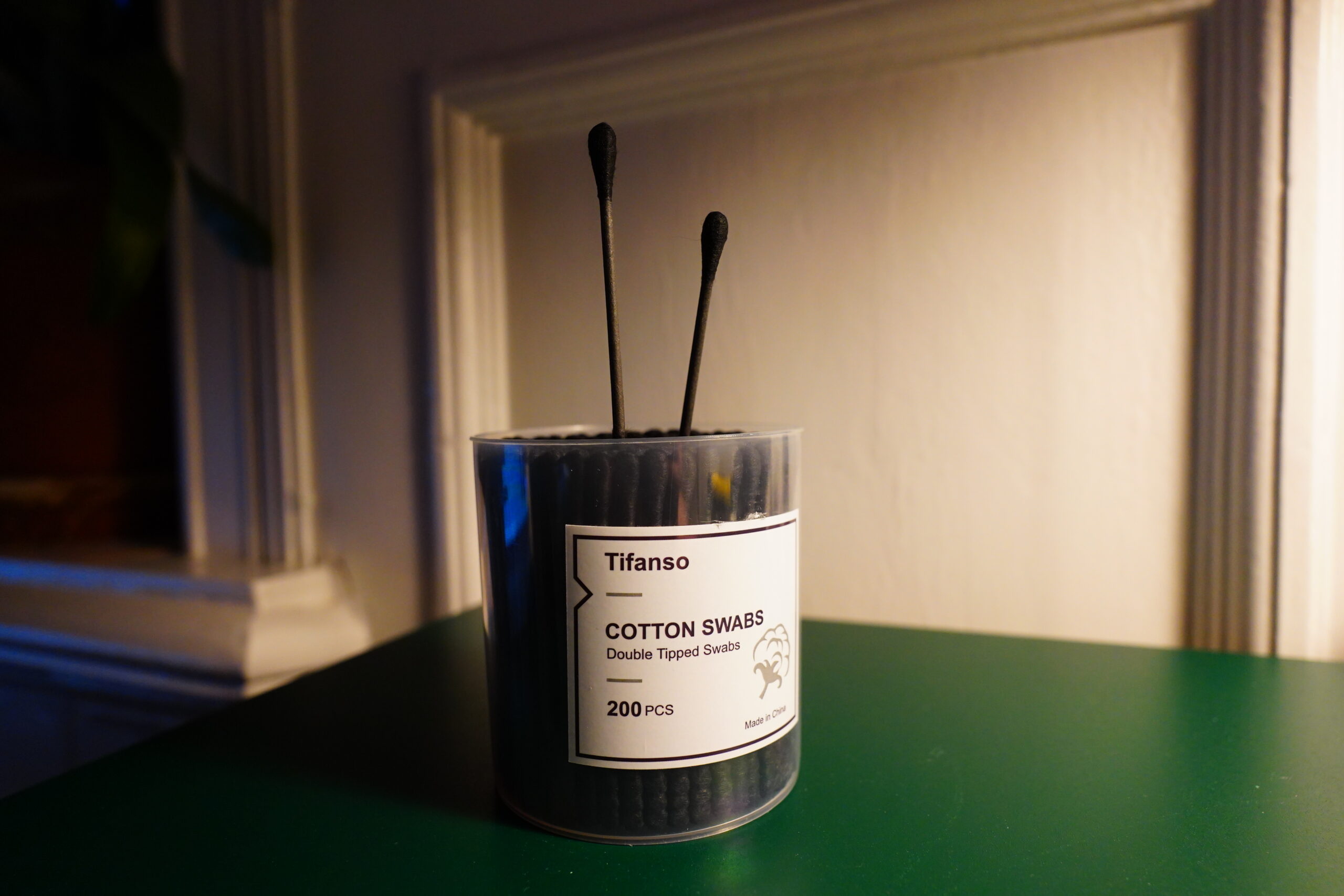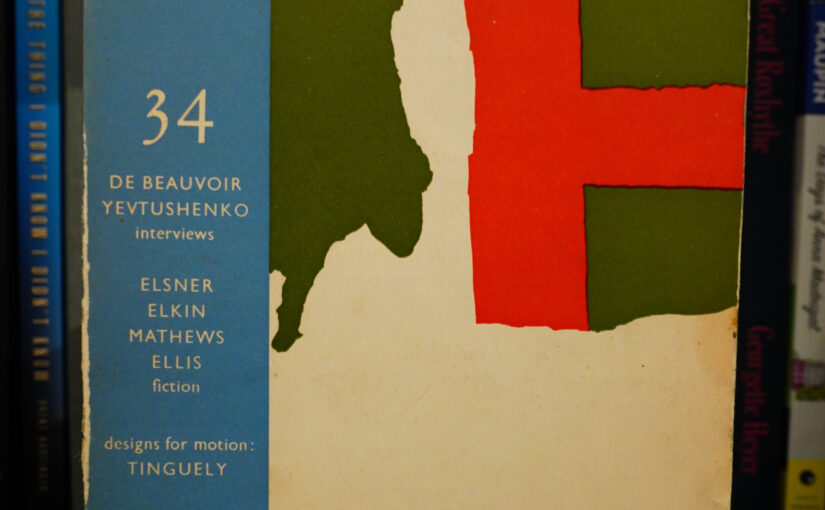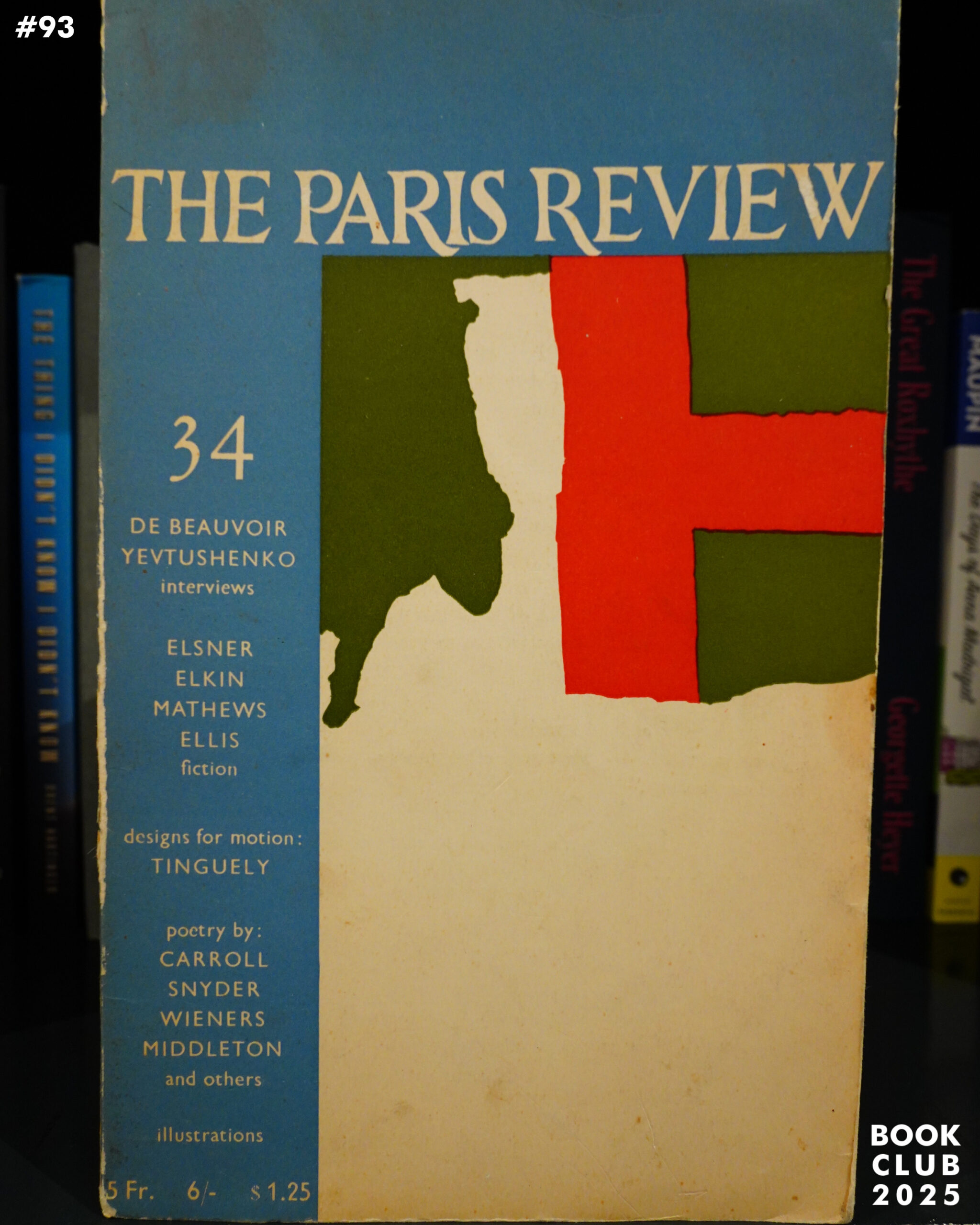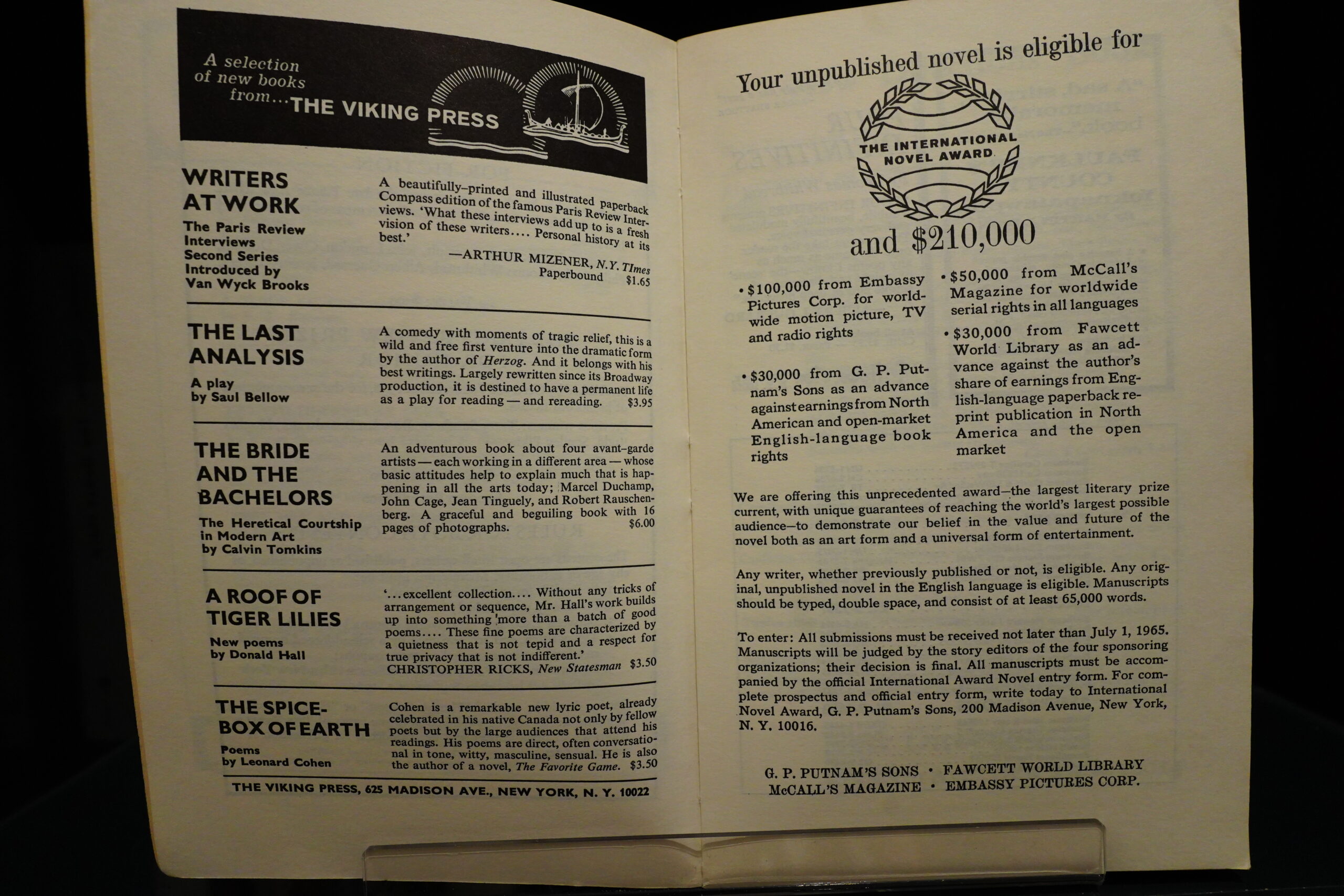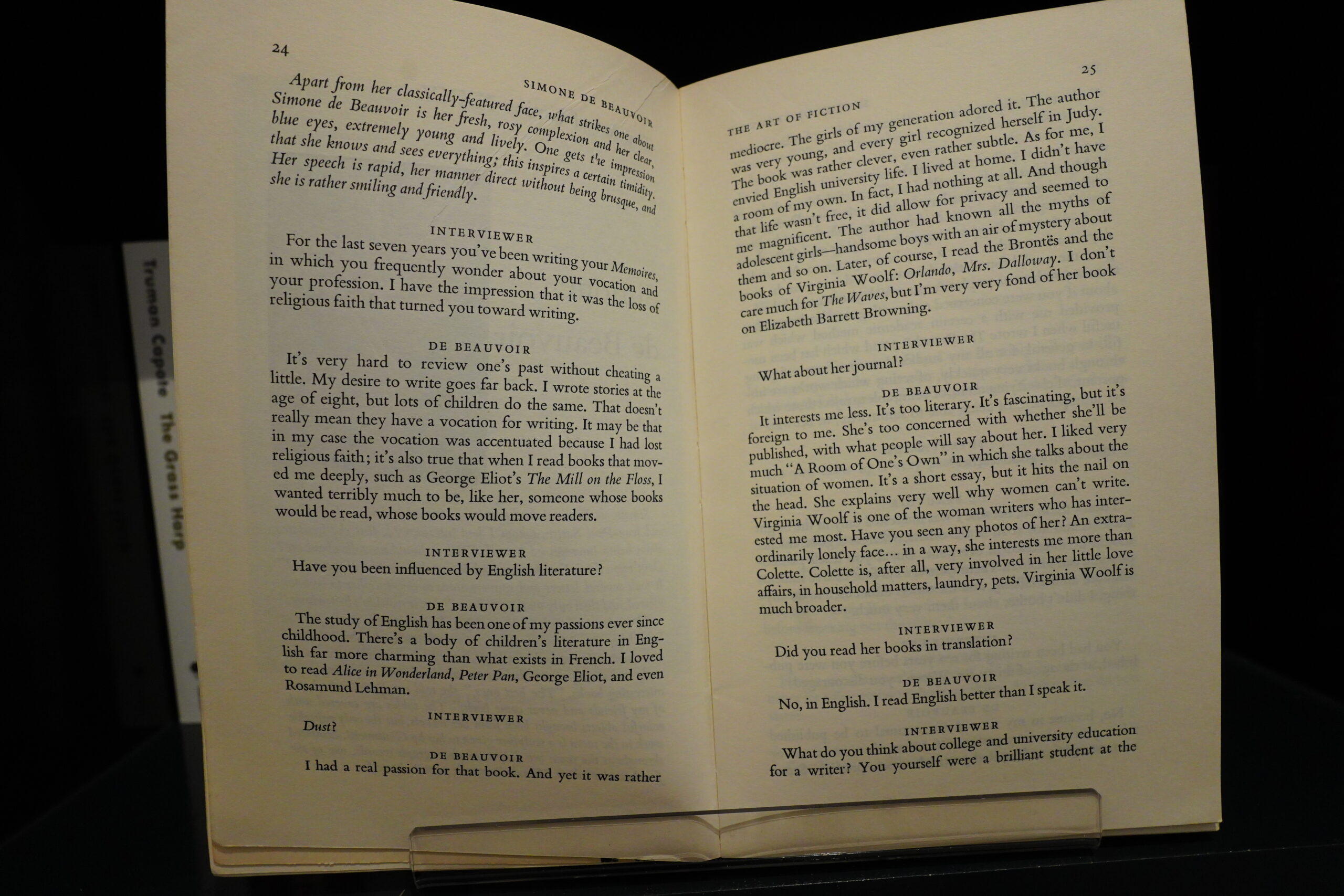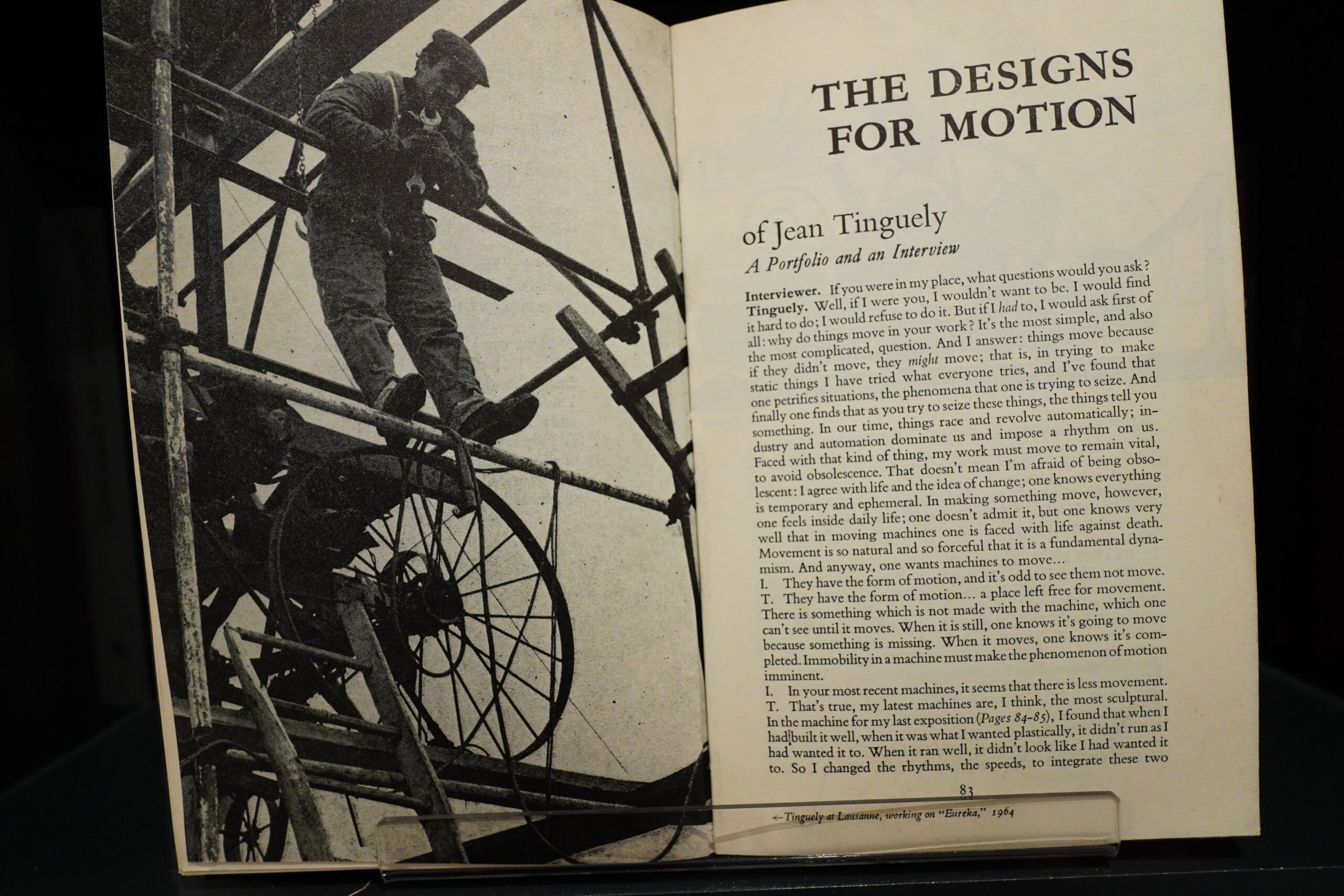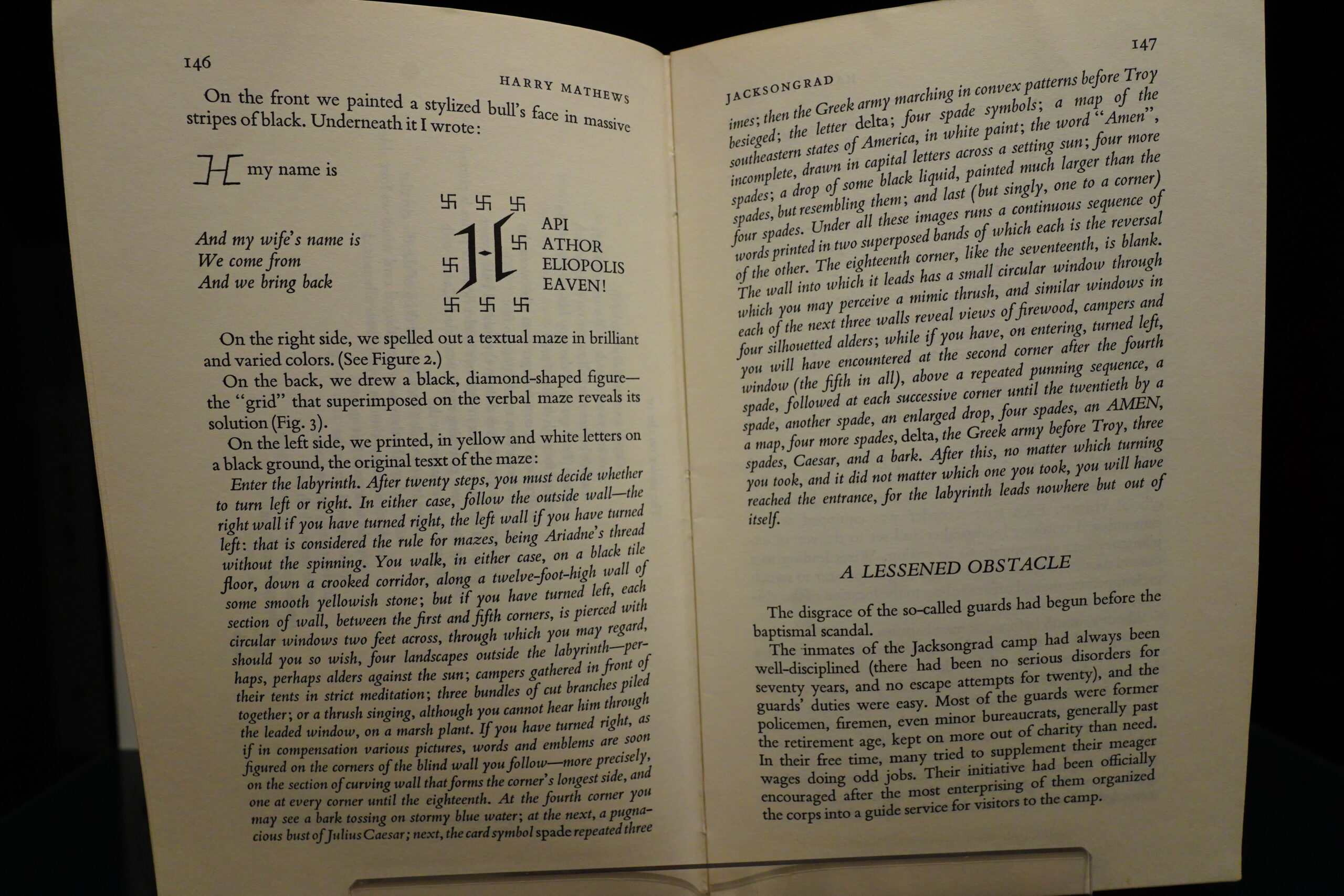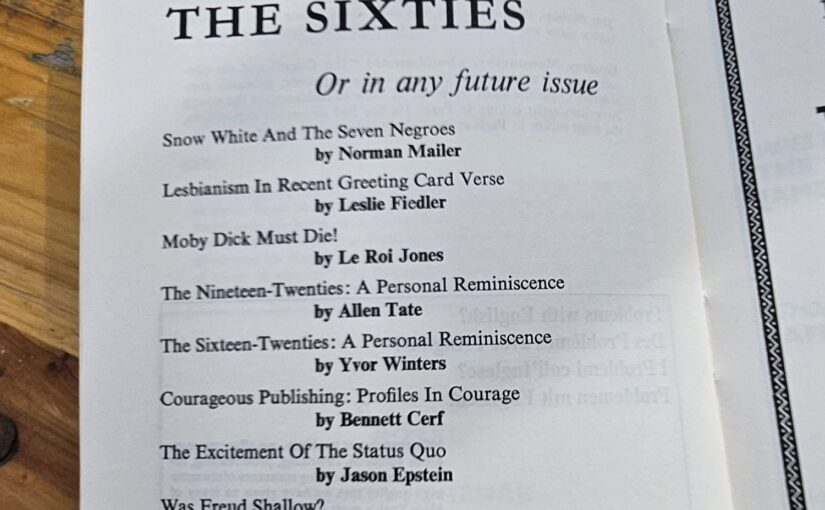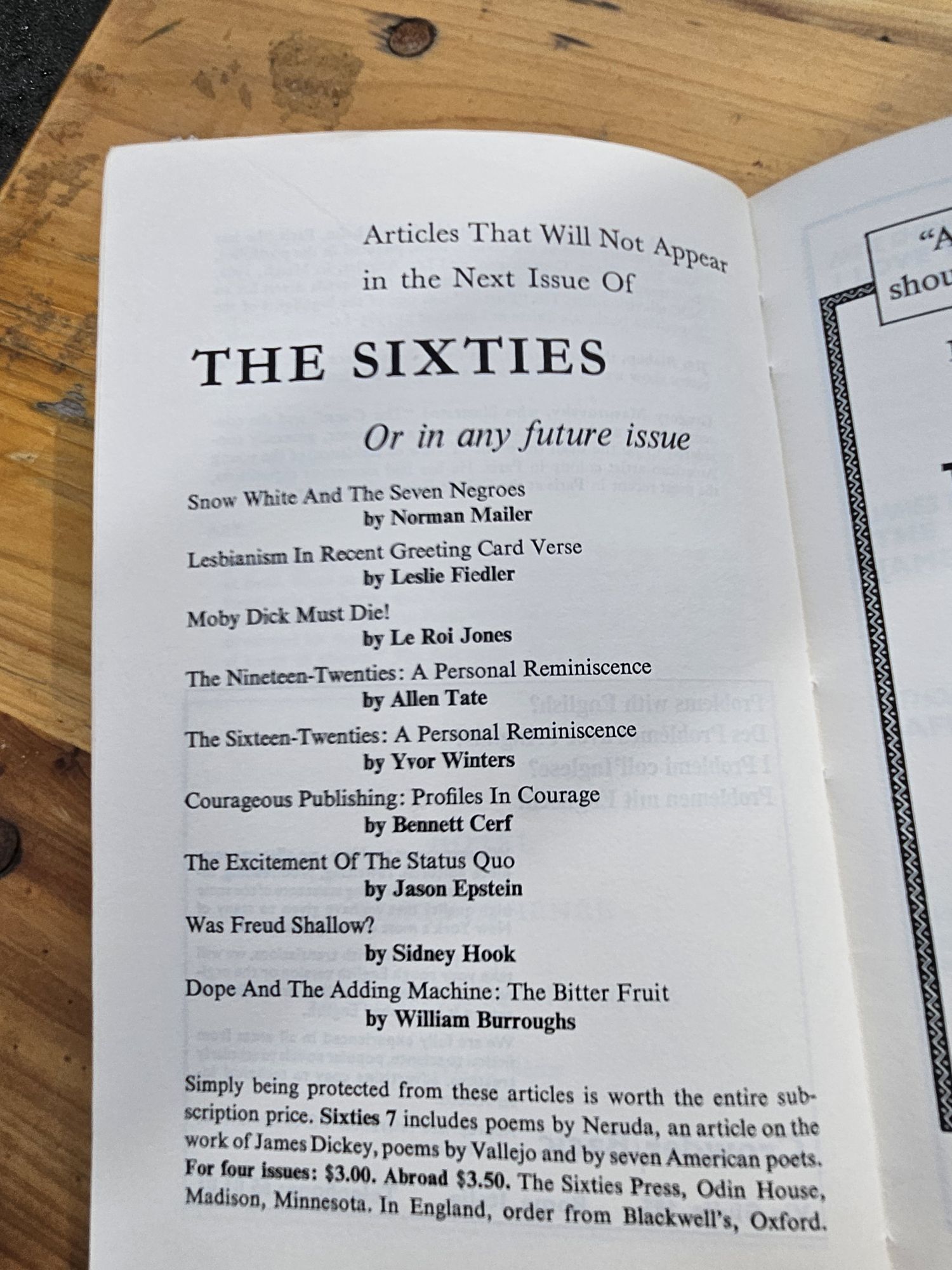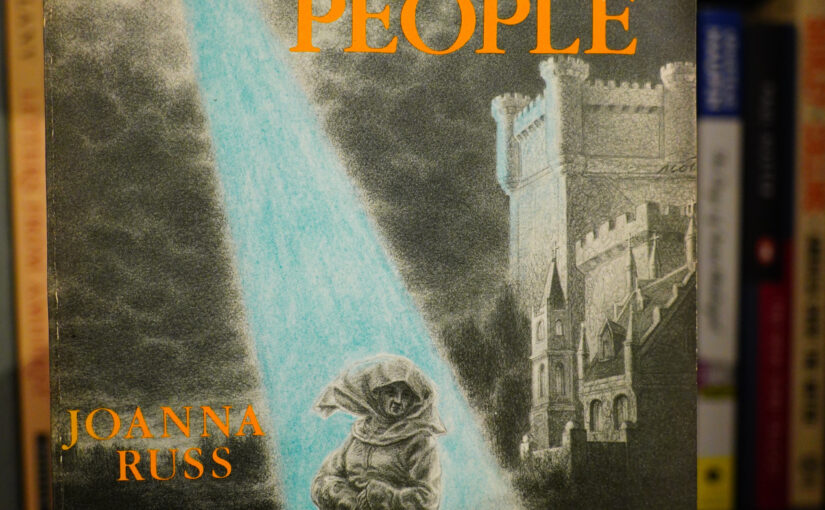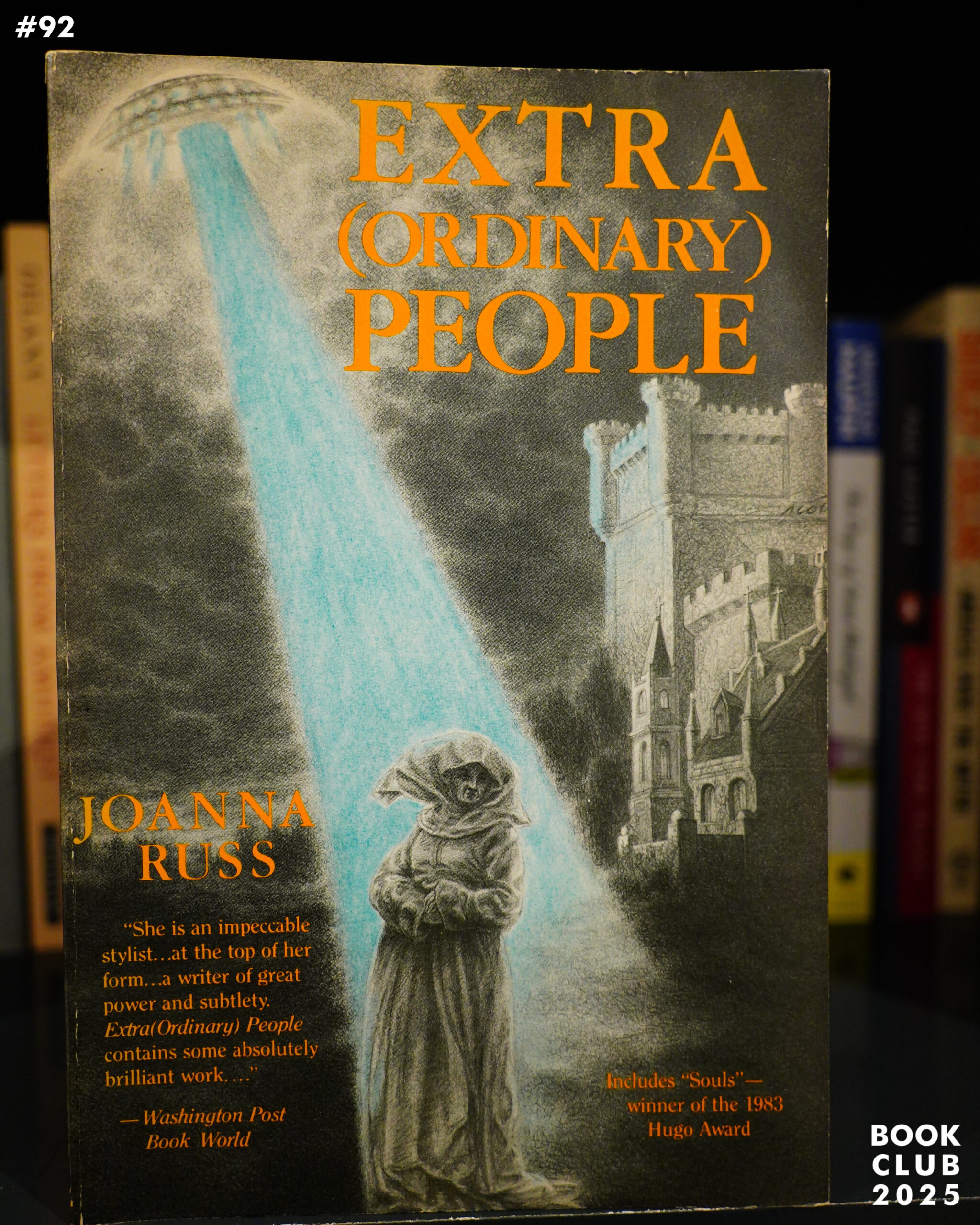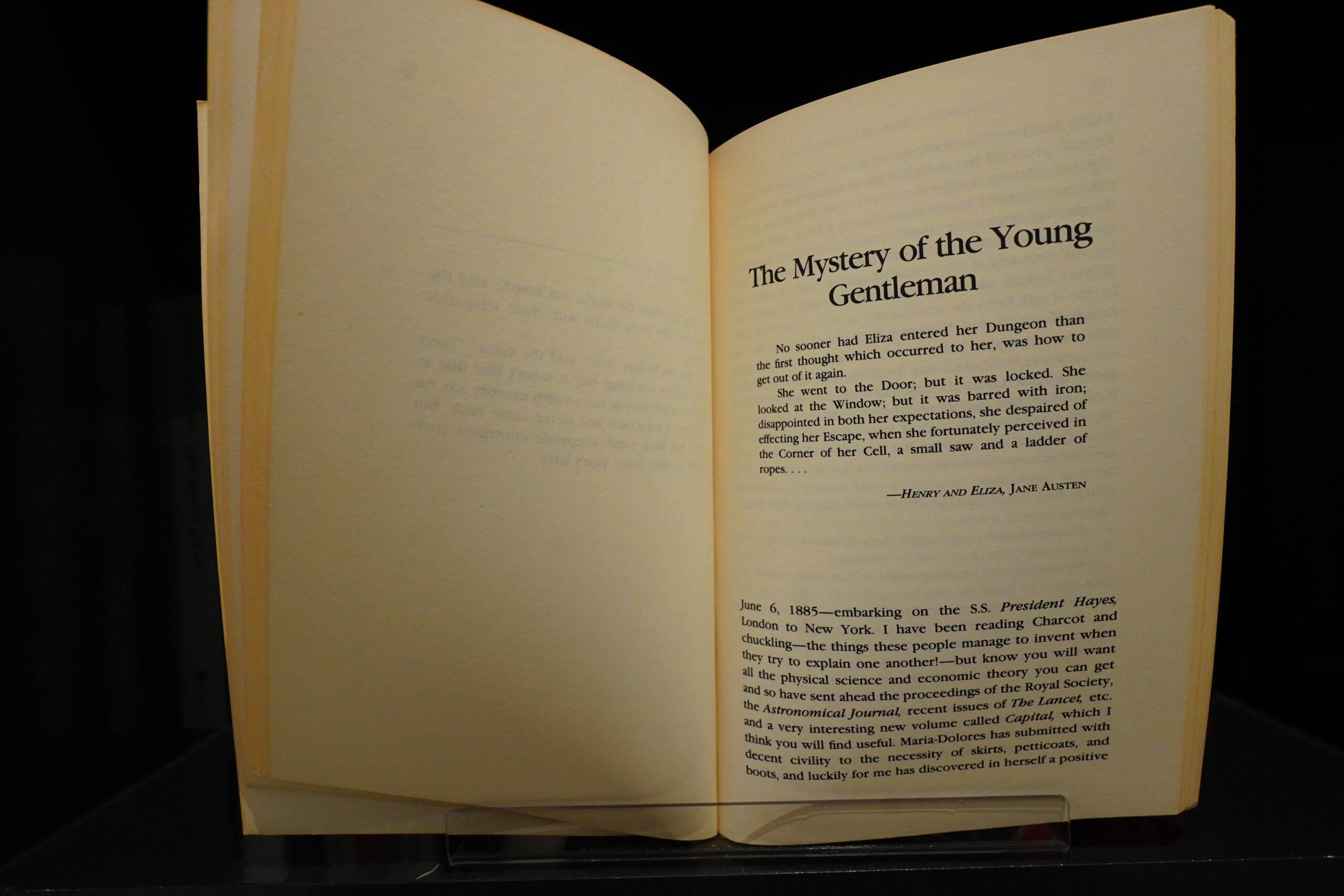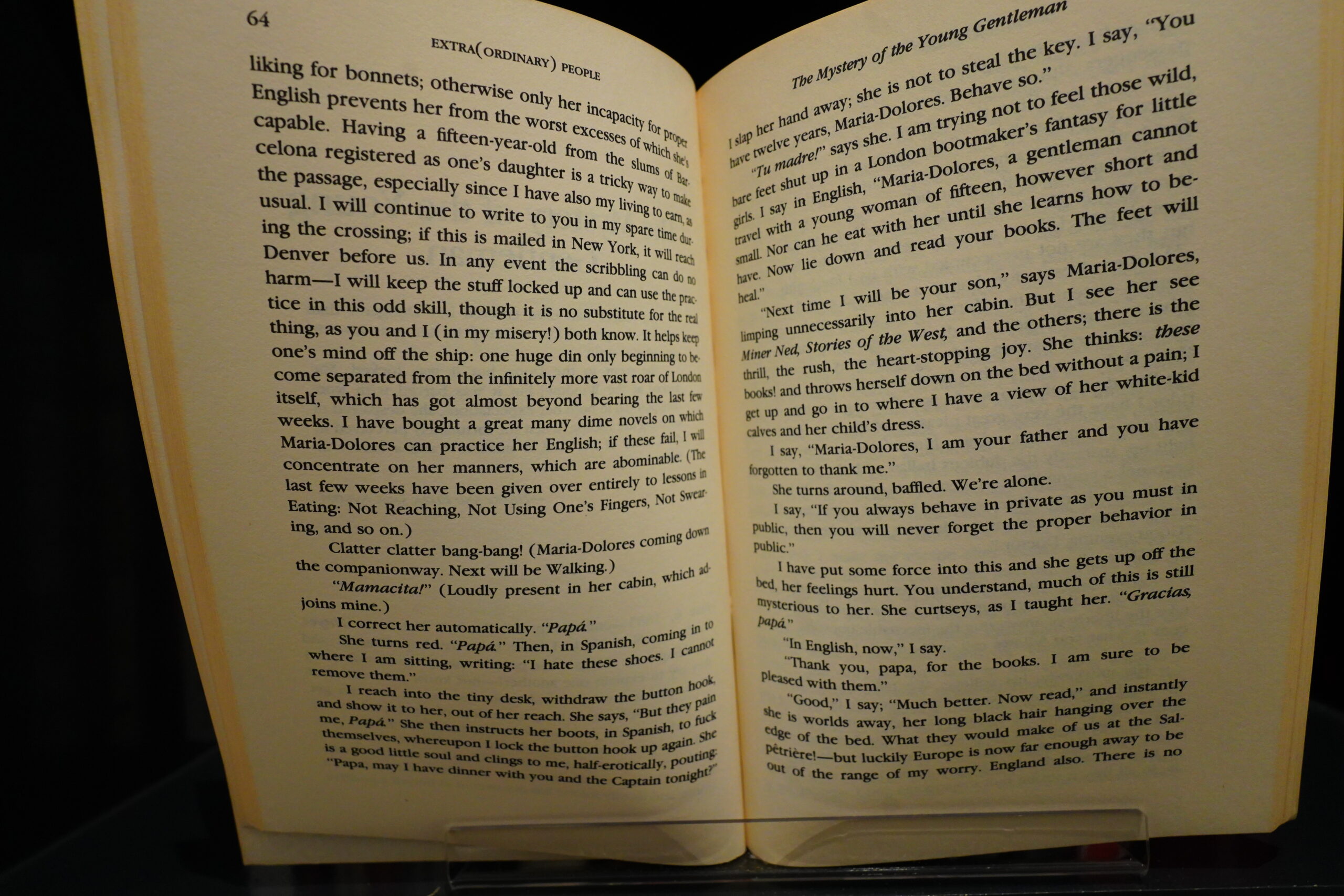Here’s some comics I’ve read the past couple weeks.
I’ve read a couple of Rick Tremble’s books before, but they’ve been smaller in format.
This is magazine size, and the pages just overwhelm the reader. When you have this much text (and you mostly have fixed-sized panels like this), it helps with readability to just use a smaller page format — a couple panels per page would make it less daunting.
But it’s pretty engrossing nonetheless — this book mostly deals with Trembles’ travails with various landlords over the years, and it’s interesting and frequently very amusing.
I’ve read most of Copra before, but in pretty much random order, depending on which issues I’ve happened upon in comics shops and the like.
This book collects the first dozen issues in a larger format (and on very shiny paper), and it’s a lot of fun finally reading this stuff in the proper order. It makes sense now! I mean, I enjoy being confused, but it’s a relief to finally understand things, too.
I really like Fiffe’s artwork, and his storytelling chops are just amazing, too. Reading this book was so much fun.
The only problem with this collection is that there’s no subsequent collections! I want to read them all like this now!
This book is by Marion Fayolle, which is a name that’s unfamiliar with me.
It’s called Les amours suspendues, and I’ve read nothing like it before. Instead of taking things from movies, it’s a more ballet-based comic. (I guess Neil the Horse could be considered to be a dance-based comic, too, and while it’s brilliant, it’s not this extreme.)
So this tells the story about a man who keeps flirting with various women, and it’s about the images we create of other people, and self delusions, and … It’s a lot!
It’s great. It’s so original and compelling, but this strange storytelling approach really works. Is it perhaps influenced by Éric Rohmer? Probably not, but it fascinating and compulsively readable.
It won Prix spécial du jury du Festival international de la bande dessinée d’Angoulême 2018, which is totally understandable. It’s been translated to German, Italian and Chinese, but not English.
Here’s a scathing review:
I like World War 3 Illustrated, this sounded like it was in that vein…
… but this just didn’t grab me.
The art style seems annoying somehow (is it all done on a tablet?), and I just couldn’t make my way through it, so I ditched it after 40 pages or so.
This is Karla Paloma’s first book…
… and even after having read most of the book, I was somehow thinking this was a Swedish comic, because it just looks very Galago-ish, if that makes sense. I was going “but hang on, this is in Danish, isn’t it?” and indeed it is. Duh.
It’s very punk. The stories are a kind of mix of what I assume are autobio-ish bits (the setting, mostly), because it feels very true. But the stories are completely wild and strange and fun — think Julie Doucet.
It’s fun.
This, on the other hand…
It’s about growing up gay in Brazil, and it reads like a comics memoir — for worse and for worse. That is, it’s a jeremiad about how everybody’s mistreating the poor little boy, who’s done nothing wrong. And of course he hasn’t, but that approach is kinda *rolls eye*. C’mon. Give the kid some personality, at least.
(And I also find the artwork and storytelling style offputting.)
But it’s not autobio or even bio — it’s just a collection of horrible things. Did they really give boys in Brazil in the 70s pills to make them throw up, along with gay porn, so that that would work as aversion therapy? If so: Very creative! Very Clockwork Orange!
And of course electroconvulsive therapy, and later he becomes very religious, and etc etc etc.
It doesn’t really even work as propaganda — the book is just too annoying.
This is intelligent, meaningful and importantly, in the right hands it could change lives.
Or:
The art is fantastic, and you immediately notice the colour scheme at play. It’s clever and brilliantly done.
Or:
There are some excellent character moments in this comic; some are good, some are not – this is life and the harsh realities of the life that is depicted in the story.
Anyway!
That was… My Week In Comics.
